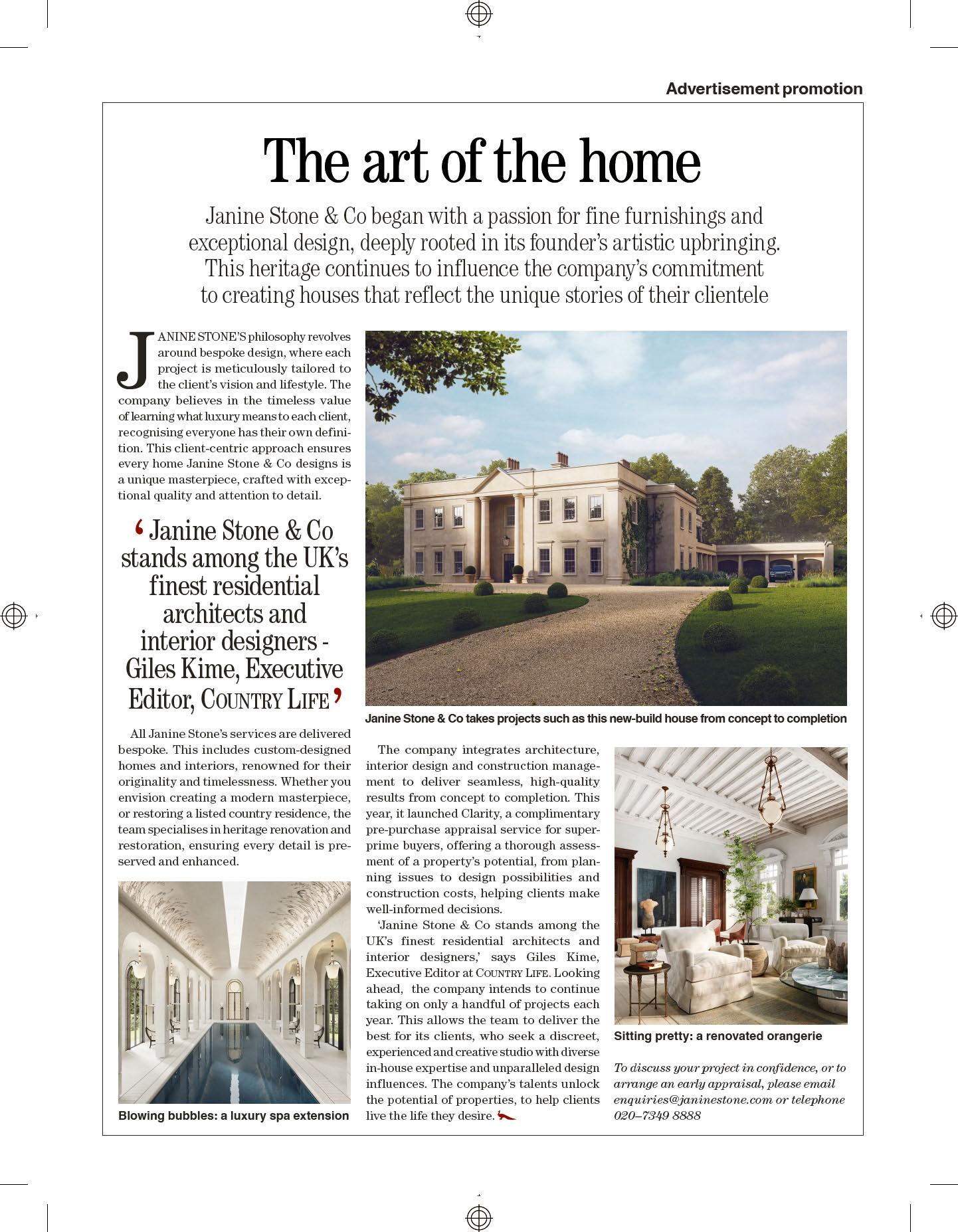




































WORK is under way to transform the statuesque Victorian gasholder directly overlooking the Kia Oval cricket ground in south London, SE11, into a development of 199 new homes—Berkeley’s The Halo. Interiors will be Scandinavianinspired, every residence will have a balcony —except for the 18 penthouses with terraces —and residents will have access to The 1847 Club (named for the year the gasholder was built), with a swimming pool, gym, spa and treatment rooms, private cinema and relaxation area. Within 2½ acres of green space, roses will tumble over the gasholder frame in a central plaza, which will also feature a lily pond, waterfall and bridges. Commercial space is vast, with a 76,000sq ft offering.
There are thought to be only eight old Harrier jets remaining in the UK and this house has one in gardens designed by Gertrude Jekyll— about as unique a selling point as we can think of. Ten-bedroom Durford Edge, designed by Inigo Triggs, close to Liss and Petersfield in Hampshire, is on the market for excess £3.25 million. Fine & Country (01962 600691)
‘The magnificent Victorian gasholder at the heart of Berkeley’s Oval Village development is a notable landmark on London’s skyline and, overlooking the world-famous Kia Oval cricket ground, an important backdrop to sporting history,’ comments Paul Vallone, chairman of Berkeley (Central London). ‘Oval is an exceptional place to live; this established boutique neighbourhood has long been favoured by city dwellers for its array of parks, excellent transport connections and proximity to the centre of the capital. This is already a thriving, sought-after community.’
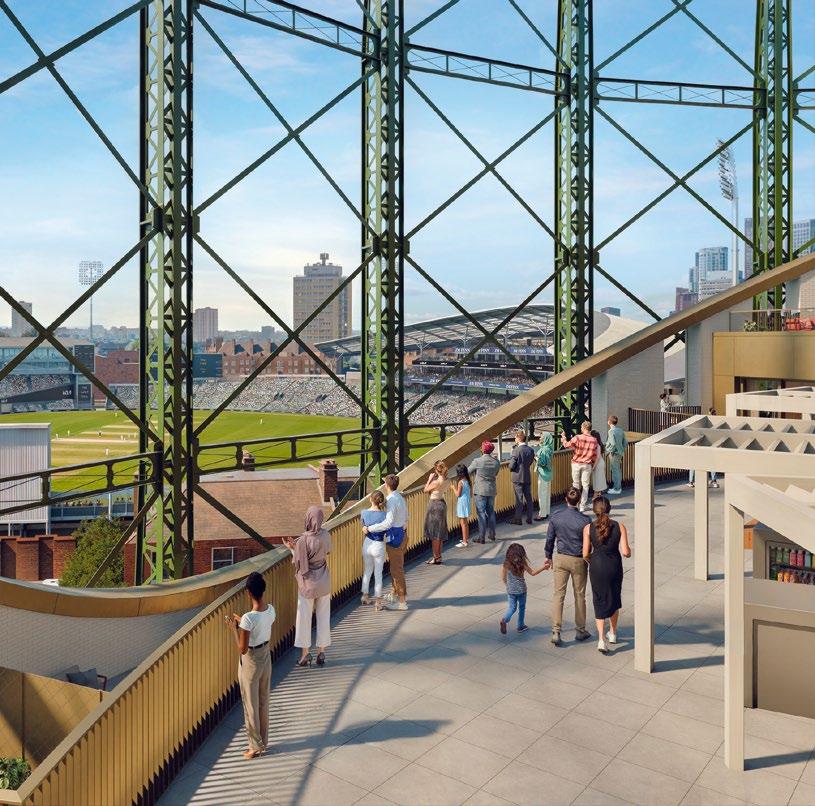
The first release of apartments came last month to significant interest; prices range from £580,000 to £2.65 million, with first completions set for Q1/Q2 2028 (020–3797 0025; www.berkeleygroup.co.uk). Sales at Oval Village have been strong, with more than 450 homes sold since its launch in 2019.
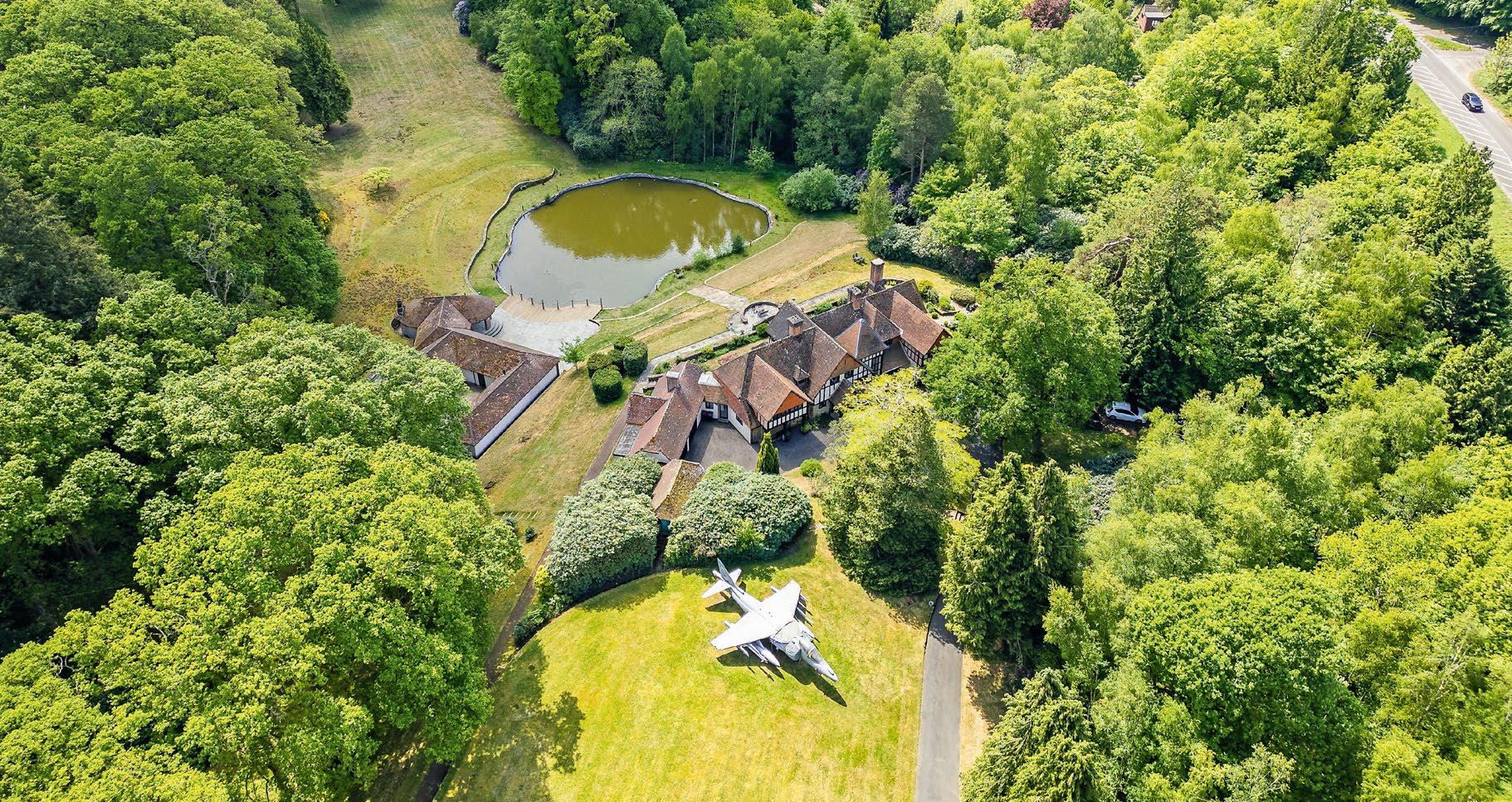
ACOLLECTION of nine net-zero carbon homes in Kent has launched, with sustainable housing developer Q New Homes calling them (probably) Britain’s greenest homes; it is believed no other development in the UK has successfully met the strict criteria for the Royal Institute of British Architects’ (RIBA) Climate Challenge. With air-source heat pumps, mechanical ventilation with heat recovery (MVHR), PV solar panels and even low-carbon concrete, Hartdene Barns are on the site of a former dairy farm at Cowden, within the High Weald National Landscape.
In addition to individual gardens, residents will each have their own on-site allotment managed by Roots Allotments, which provides organic, no-dig, chemical-free spaces. ‘People can choose what fruit and vegetables they would like to see coming through the door and we’ll set up their allotment to provide them,’ explains Ed Morrison, founder of Roots Allotments. ‘The addition of the owl nests encourages owls to come to the allotments to act as a natural pest control. On top of this, we are working to create other areas that will enhance biodiversity and create new habitats, such as native hedgerow, wildflowers and insect hotels.’
‘It took a lot of time and careful planning to make sure we were ticking the green boxes throughout

Five donkeys of Langton Farm in the Cotswolds seek new owner: must have more than £3 million; extras include seven-bedroom farmhouse, two cottages and 40 acres between Bath and Bristol. Carter Jonas (01225 747250)
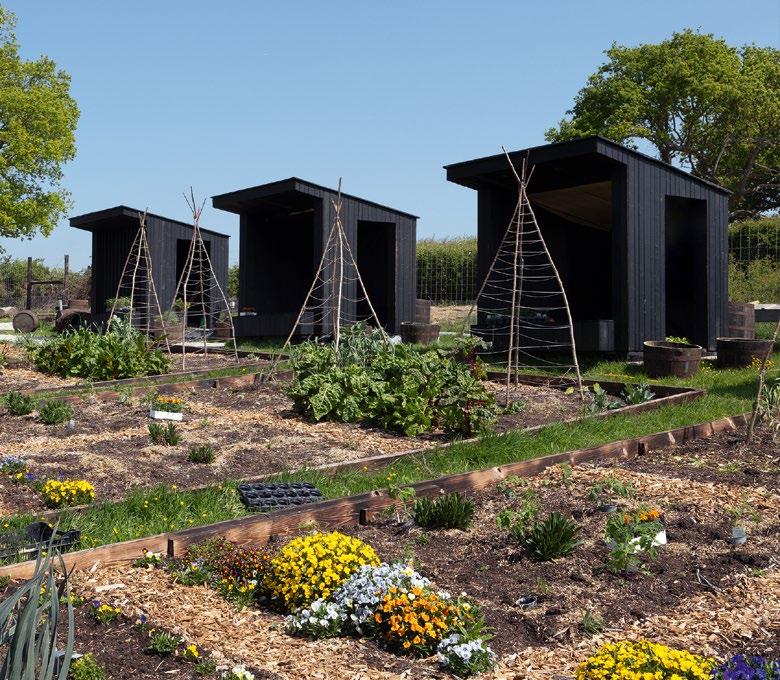
Life on the veg: each luxury home comes with its own allotment at Hartdene Barns in Kent
the construction of Hartdene Barns,’ adds Michael Wynne, co-founder of Q New Homes. ‘To us, sustainability does not lie solely with the energy sources, which is already seeing some progress around the country. Sustainable materials, the appliances used in the interiors and the promotion of biodiversity are equally as important to creating a green home. These homes will give residents a slice of luxury in the heart of the Kent countryside, as well as giving them the peace of mind that they are in keeping with the natural environment.’
Prices at Hartdene Barns start from £1.25 million for a three-bedroom terraced property, increasing to £2.5 million for a four-bedroom link detached barn (www.moverevolution.com).
If only I’d bought… December 18, 1958

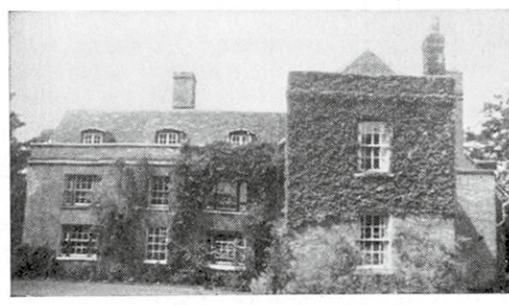


Holding onto property
UK house prices have increased by 74% over the past 20 years, with house price-to-earnings ratios staying in line at 6.42, finds Zoopla. Some areas are more affordable than most: London prices are up by 119%, but in the North-East, the increase is only 26%, with house price-to-earnings ratios the most improved compared with the rest of the UK, falling from 5.7 to 4
A little help
Amid the tougher mortgage market, the Bank of Mum and Dad (Bomad) paid out £9.6 billion in gifts and loans in 2024, according to Savills; overall, Bomad has provided £38.5 billion in assistance over the past four years—71% more than the previous four years (£22.5 billion)
A little limelight

Three episodes of the new Channel 4 series of Britain’s Most Expensive Houses feature Cornish properties handled by Lillicrap Chilcott, ‘mainly in very dramatic coastal settings,’ says chairman Ian Lillicrap. The programme follows the houses from valuation to launch and sale
Good vibes
Cleansing the energy of a newly purchased house, including working with vibrational fields and land acupuncture, has become common, particularly among buyers in their thirties or forties, The Buying Solution’s Harry Gladwin told the Financial Times
Winkworth
The estate agent, founded in Mayfair in 1835 (when a typical London home cost £200) by land agent and auctioneer Samuel Donaldson, celebrates its 190th anniversary this year


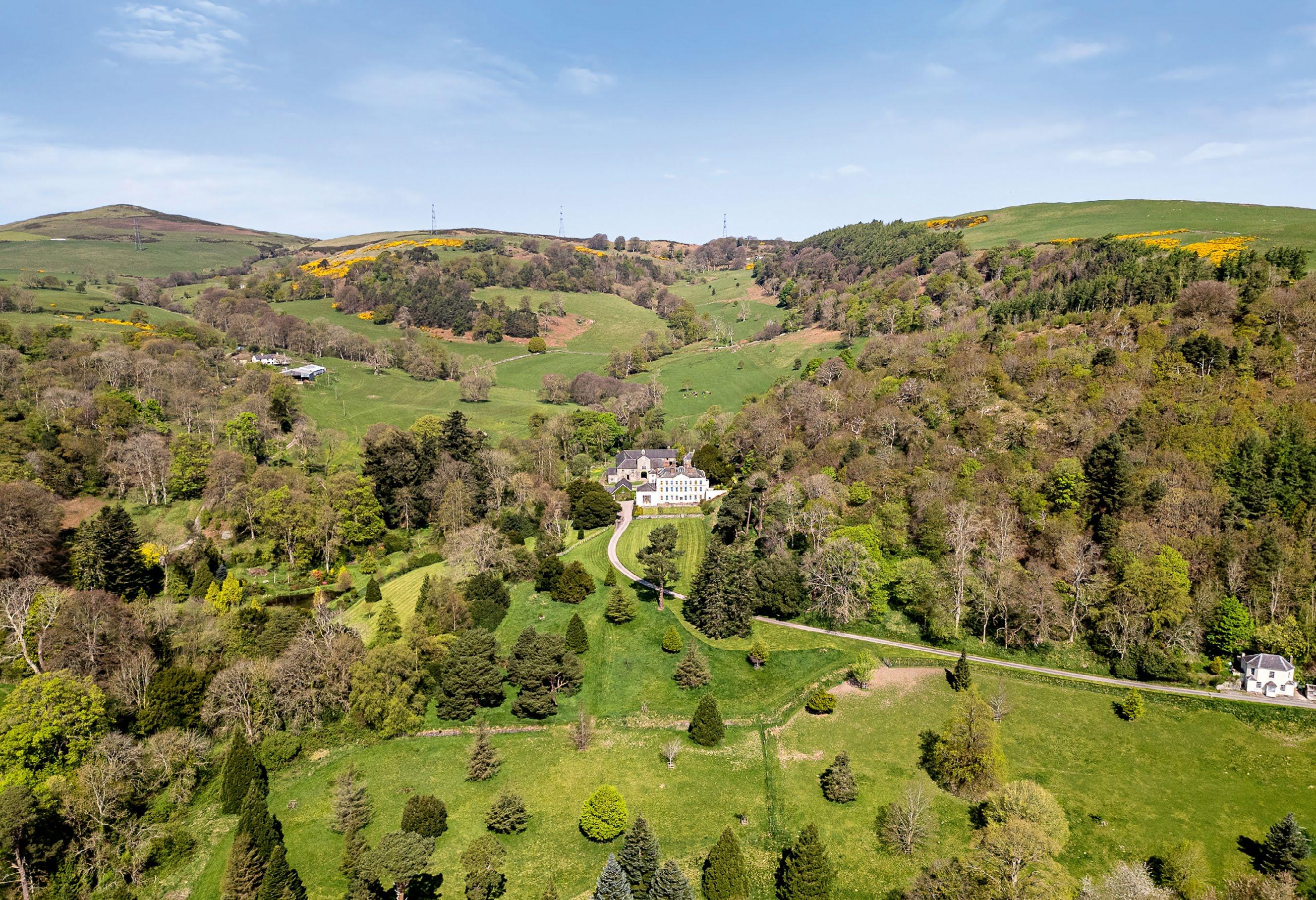
Three stellar
estates
in Wales and Staffordshire show how careful restoration is always worth the effort

Above: The historic Garthewin estate spans 507 acres near Llanfair Talhaiarn in Conwy. £4.5m. Left: Grade II*-listed Garthewin Hall, home to the Wynne family for 11 centuries
THE hill above the ancient village of Llanfair Talhaiarn, one of many hidden villages that line the lovely valley of the Elwy in North Wales, is the idyllic setting for the historic 507-acre Garthewin estate, which comes to the market, for only the second time in its history, through the Chester office of Fisher German (01244 409660) at a guide price of £4.5 million for the whole. At the heart of the estate stands Garthewin Hall, first recorded in the 14th century, when, according to Cadw, it was the home of a junior branch of the Wynne family of nearby Melai, descendants of Marchudd ap Cynon, the 9th-century founder of the eighth Noble Tribe of North Wales. In the early 17th century, Robert Wynne married Margaret Price, the heiress of Garthewin, after which
the Elizabethan farmhouse that replaced the original house was knocked down, as was the Jacobean house that succeeded it.
In about 1700, Dr Robert Wynne, chancellor of St Asaph and vicar of Gresford, rebuilt Garthewin as an elegant, nine-bay country house, incorporating some of the earlier 17th-century building in its rear pile. His house is essentially that which survives today, although a new façade and various cosmetic alterations were undertaken between 1767 and 1772 for Robert Wynne, the chancellor’s grandson, who was High Sheriff of Denbighshire in 1769. These were carried out by Chester architect Joseph Turner and involved the addition of a threestorey brick façade and a pedimented entrance.
Between 1800 and 1810, a single-storey ballroom was added at the south-west corner and a picturesque tower behind the ballroom on the west side was built in about 1870. In 1930, following a period of neglect, the house was restored for R. O. F. Wynne by Sir Clough Williams-Ellis, creator of nearby Portmeirion. At this point, the façade was stuccoed, the entrance was moved to the west and a new paved garden-front terrace, with a pavilion designed to visually balance the ballroom extension, was added. At the same time, a workshop was converted into a chapel and the stables into a private theatre.
The glory days of the 1930s were a distant memory when, in 1995, Menna MacBain, the last of the Wynnes to own Garthewin, abandoned the unequal struggle to maintain the increasingly dilapidated property. The following year, Grade II*-listed Garthewin Hall
and its surrounding estate were acquired by Michael Murray Grime, who spent much of the rest of his life, until his death in September last year, renovating and restoring the 11-bedroom hall and its Grade II*-listed outbuildings, together with the terrace walls, steps and gazebo, the chapel, Garthewin Farmhouse, The Book Room (a charming twostorey cottage) and a ruined dovecote, all listed Grade II. The hall and its self-contained, three-bedroom flat provide more than 14,200sq ft of living space in total, including four reception rooms and 11 bedrooms in the main house, with further accommodation in five tenanted cottages and houses.
The sale of Garthewin is a rare opportunity to acquire a spectacular upland estate, which offers considerable potential
Gardening was Mr Grime’s great passion and, from the outset, he set about restoring Garthewin’s eight acres of formal gardens originally laid out in about 1710, ‘but just a bog surrounded by overgrown trees’ when he first arrived. The formal south-facing lawns sit to the front of the house, with a croquet lawn linked to the main lawns via a bridge through the ha-ha wall. To the
south-west of the house are two ornamental lakes surrounded by established shrubberies, including some wonderful native trees and many exotic specimens—only some of the countless trees planted at Garthewin during Mr Grime’s tenure.
The land includes 248½ tenanted acres at ring-fenced Ty Mawr Farm, with 60 acres of let grassland and rough grazing behind the hall and a further 10 let acres of grazing and woodland adjoining the gardens and grounds. A further 117 acres of upland grazing is let on a farm business tenancy, with some 52 acres of commercially managed woodland retained in-hand by the owner. For selling agent Michael Harris of Fisher German, ‘the sale of Garthewin is a rare opportunity to acquire a spectacular upland estate, which offers immediate income from its cottages and farmstead, with considerable potential for further diversification and income creation’.
Overlooking the Menai Strait and Anglesey near the village of Y Felinheli, Gwynedd, Oliver Custance Baker of Strutt & Parker (020–7591 2213) is handling the sale of Grade II*-listed Bryntirion, a fine country house of impeccable provenance set in 29 acres of grounds bordering National Trust land on the banks of the Menai Strait between Bangor and Caernarfon. He quotes a guide price of £2.85m for the handsome stone-built house, which dates from the late 17th or early 18th century and underwent a late-Georgian remodelling early in the 19th century. Despite the surrounding land being progressively bought up by the neighbouring Vaynol Park
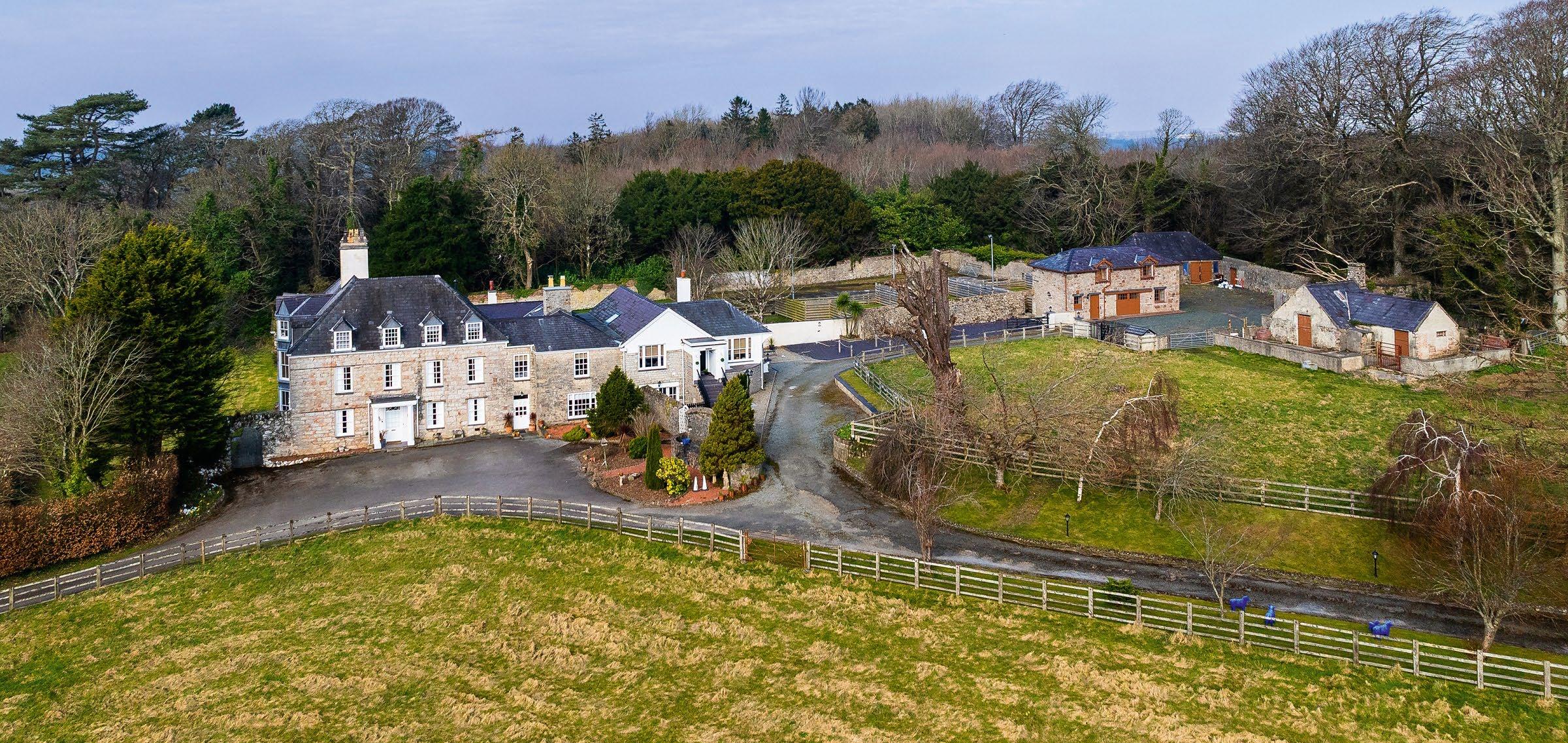

Park Lodge enjoys a secluded position at the heart of the 1,789-acre Bagots Park farming, sporting and residential estate near Abbots Bromley in Staffordshire. £16m for the whole
estate, the former owners of Bryntirion held out until the 1830s when it finally became part of the 1,000-acre estate, where it was used as the home and office of the managing agent.
Vaynol passed to the Crown when the last of the Williams family died without issue in 1696 and, by 1723, had been granted to John Smith, who was Chancellor of the Exchequer and Speaker of the House of Commons. In 1764, the estate was left to Thomas Assheton of Cheshire, who took the name of Smith. Marriages of various descendants introduced the Duff and Vivian names. By then, the Vaynol estate had been considerably enlarged by the wealth created by AsshetonSmith’s Dinorwic Slate Quarries, one of the two most important in Wales. However, much of the land was sold by Sir Michael Duff in 1967 and, following his death in 1980, the rest of Vaynol Park was sold and passed out of the family.
Tucked away in quiet seclusion at the southern end of the once-great estate, Bryntirion has emerged from the shadows in recent years, having been renovated throughout by its current owners. The house offers more than 11,000sq ft of living space on three floors, including five ground-floor reception rooms and five bedrooms arranged across the first and second floors. Additional
accommodation is provided in a threebedroom annexe, a first-floor apartment and the detached converted coach house. Outbuildings include two barns, a store and a stable block with potential for conversion, subject to planning consent.
Back across the Welsh border in Staffordshire, Louise Harrison of Savills Farms and Estates (07807 999066) is handling the sale of the model 1,789-acre farming, sporting and residential Bagots Park estate, which is launched onto the market in today’s C OUNTRY L IFE at a guide price of £16m for the whole. Set within a ring fence, 2½ miles from Abbots Bromley and 15 miles from the cathedral city of Lichfield, the estate comprises a principal house, additional residential properties, productive farmland, two farmyards including commercial lets, a shoot and a large let forest.
Today, Bagots Park is a well-oiled and efficient machine, a far cry from the run-down estate acquired privately, before auction, in 1964 by the late Brian Day, the father and grandfather of the current vendors. A passage in Mr Day’s book Bagots Farm records a conversation with the naturalist Phil Drabble, who bought the neighbouring Goat Lodge with 90 acres of woodland in 1963, and sets the scene: ‘When Brian purchased Bagots
Park, it looked like the dereliction of the industrial revolution, like a First World War battlefield. The Park had had generations of neglect, the grazing was absolute rubbish, and it was really just scrubland. The only things left were the very big ancient oaks, which were not worth felling. The land was very heavy clay and very acid. It wouldn’t have grown anything at all as it was… The reason Brian bought it so cheap was because the locals thought reclamation was impossible. They thought that Brian was a madman and that he couldn’t do this and, for this reason, none of the locals bid for it.’ How wrong they all were.
Bagots Park is a welloiled and efficient machine, a far cry from the run-down estate acquired privately in 1964
Previously part of the Blithfield estate, Bagots Park is famous for its eponymous black-and-white, semi-feral goat, the oldest caprine in Britain, given to the family by Richard II. The land was originally an ancient deer park, part of the historic Needwood Forest, that had been owned by the Bagot family since the Norman Conquest. In 1963, Blithfield had been sold to a consortium domiciled in the Bahamas that split up the estate and sold it off in lots. Having completed his deal in November 1964, Mr Day lost no time in sending in contractors to clear the land, which, over the years, was gradually improved by careful husbandry, so that 810 acres of farmland at the heart of the estate now includes some 758 acres of excellent arable land.
In recent years, the estate has supported a number of enterprises, including a large in-hand farming enterprise with Sustainable Farming Incentive and Countryside Stewardship Scheme support, a renowned shoot much enjoyed by the Day family, several important commercial lets and a number of residential properties let on assured shorthold tenancies. The principal house on the estate is the Victorian Park Lodge, built in 1839 as a hunting lodge for the Barons Bagot by the architect Thomas Trubshaw, which is currently used as high-end holiday and shoot accommodation, but could equally serve as a comfortable family home in a wonderfully private location.
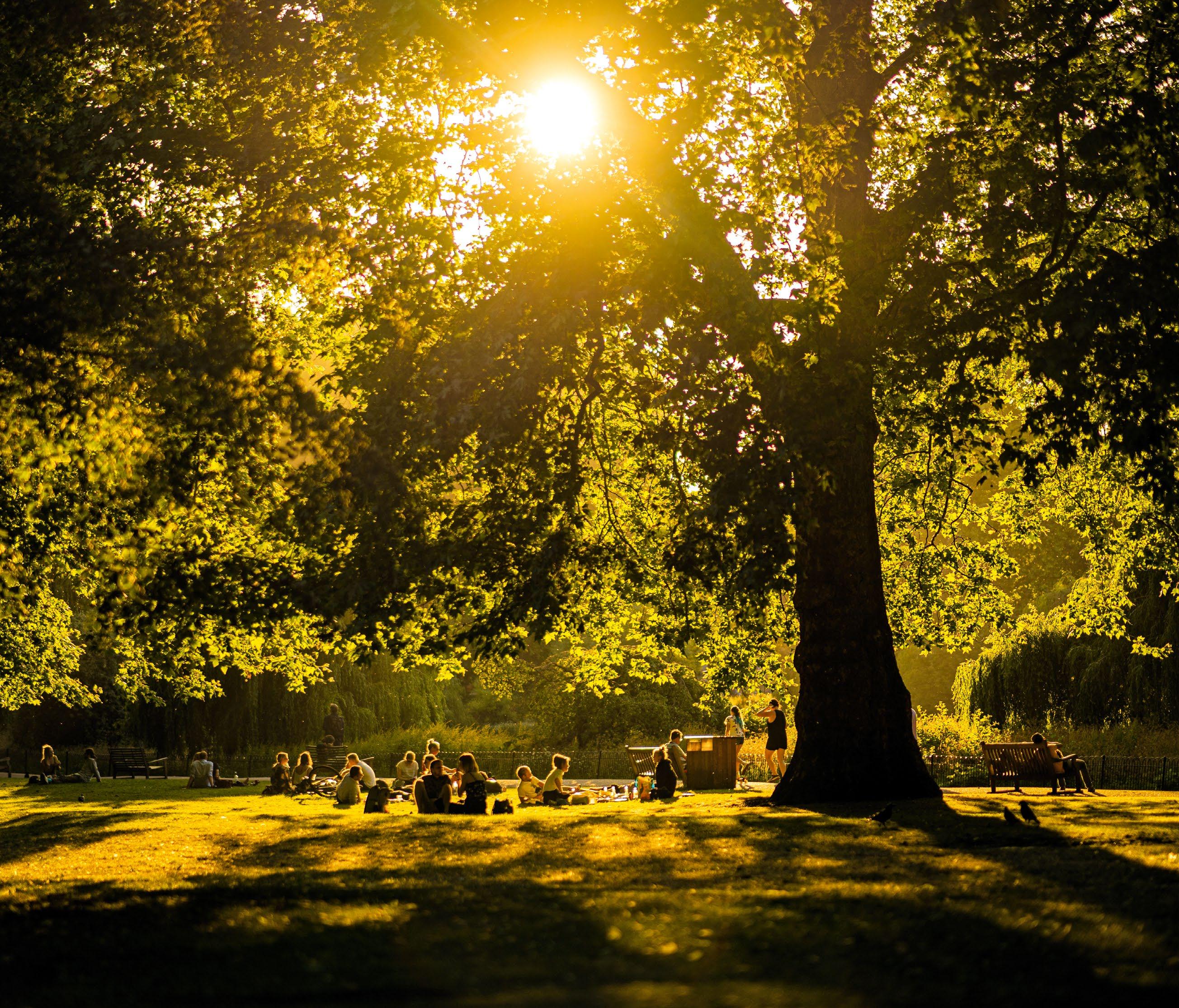
IT’S shaping up to be a big summer for live music in the capital. June saw Lido Festival take over Victoria Park, as well as concerts by Dua Lipa and Beyoncé. This month, Oasis, Diana Ross and Billie Eilish take to stages across town, before festivals such as British Summer Time and All Points East unfold in Hyde Park and Victoria Park. Classical-music lovers flock to Kenwood and Hyde Park, too. London’s parks have, indeed, become favourite sites for live music. No fewer than four festivals took place at Brockwell Park in May, prompting a legal challenge from frustrated locals, who alleged the events were spoiling things for residents.
Living in a city occasionally means having to put up with noise and I see no reason why London should forgo hosting festivals when
they are such a boon to the economy. The health of our parks, however, is worth thinking about. London is second to none in Europe for green spaces: they need to be protected.
Critics of the Brockwell Park legal challenge, which was ultimately fruitless (the festivals went ahead, despite the plaintiffs winning in court), sought to undermine the environmental argument of their opponents. They claimed that the park’s neighbours were unqualified to comment on the topic of soil health because they lacked the scientific credentials. Much of the coverage was no better, drowning out environmental concerns under the noise of local politics.
Yet the weight of tens of thousands of feet trampling over the same patch of grass again and again is, unarguably, the most important
aspect of this debate. The festival schedule causes soil compaction, explains Sarah Langford, bestselling author of Rooted: Stories of Life, Land and a Farming Revolution : ‘We need to give it more time to be re-sown and recover.’ Tom Scrope, co-founder of the start-up Soil Benchmark, adds that healthy soil ‘is the base of the terrestrial food chain’ and that ‘less soil biology and poorer grass means fewer worms, which means fewer birds’.
The reasons why London’s live music schedule is so packed in spring and summer are obvious: better weather—although when has rain ever really deterred us?—and more bank holidays. We ought to rise above both. If that means changing our calendar of Monday breaks, all the better. Bank holidays are too condensed at present, anyway. WH
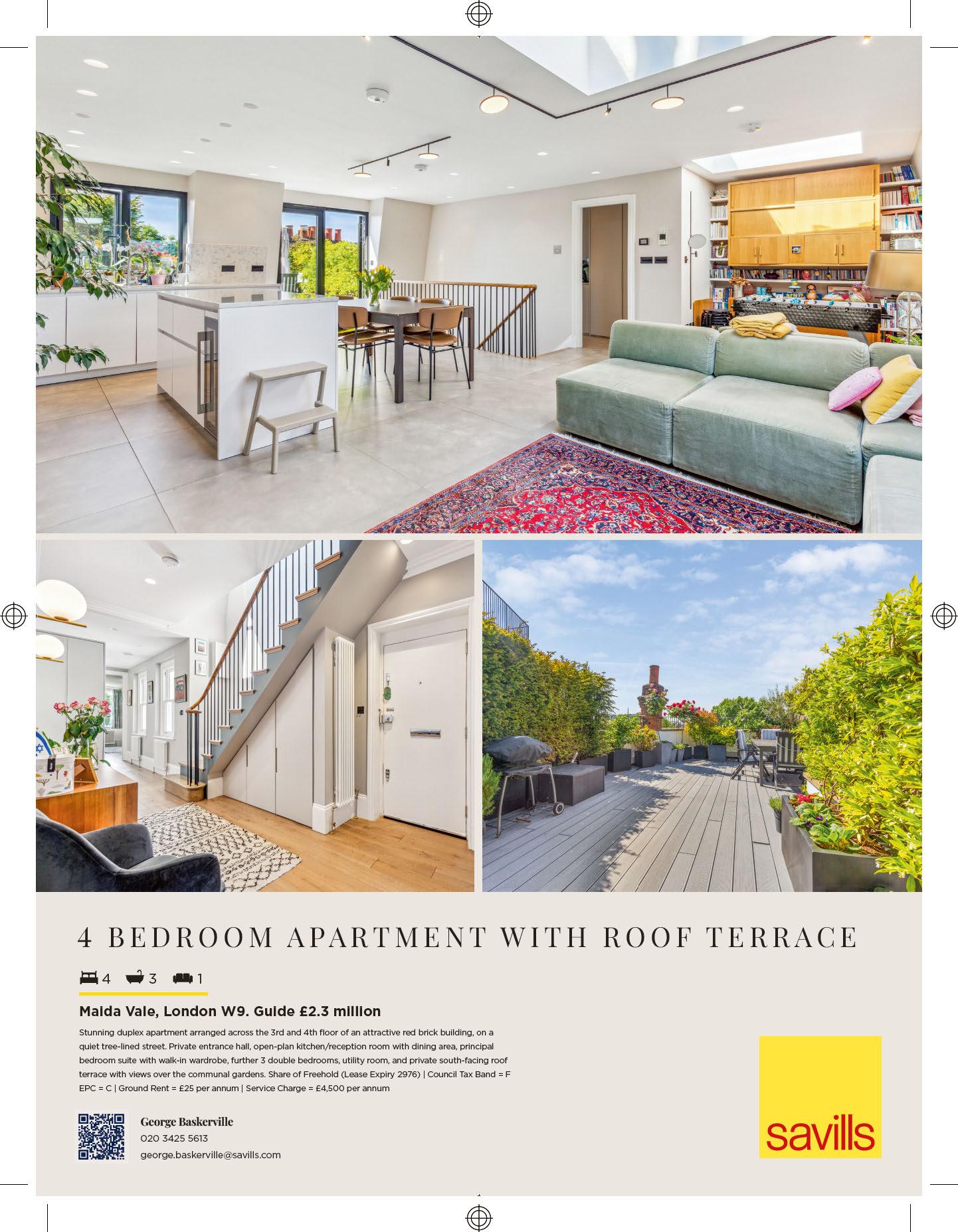

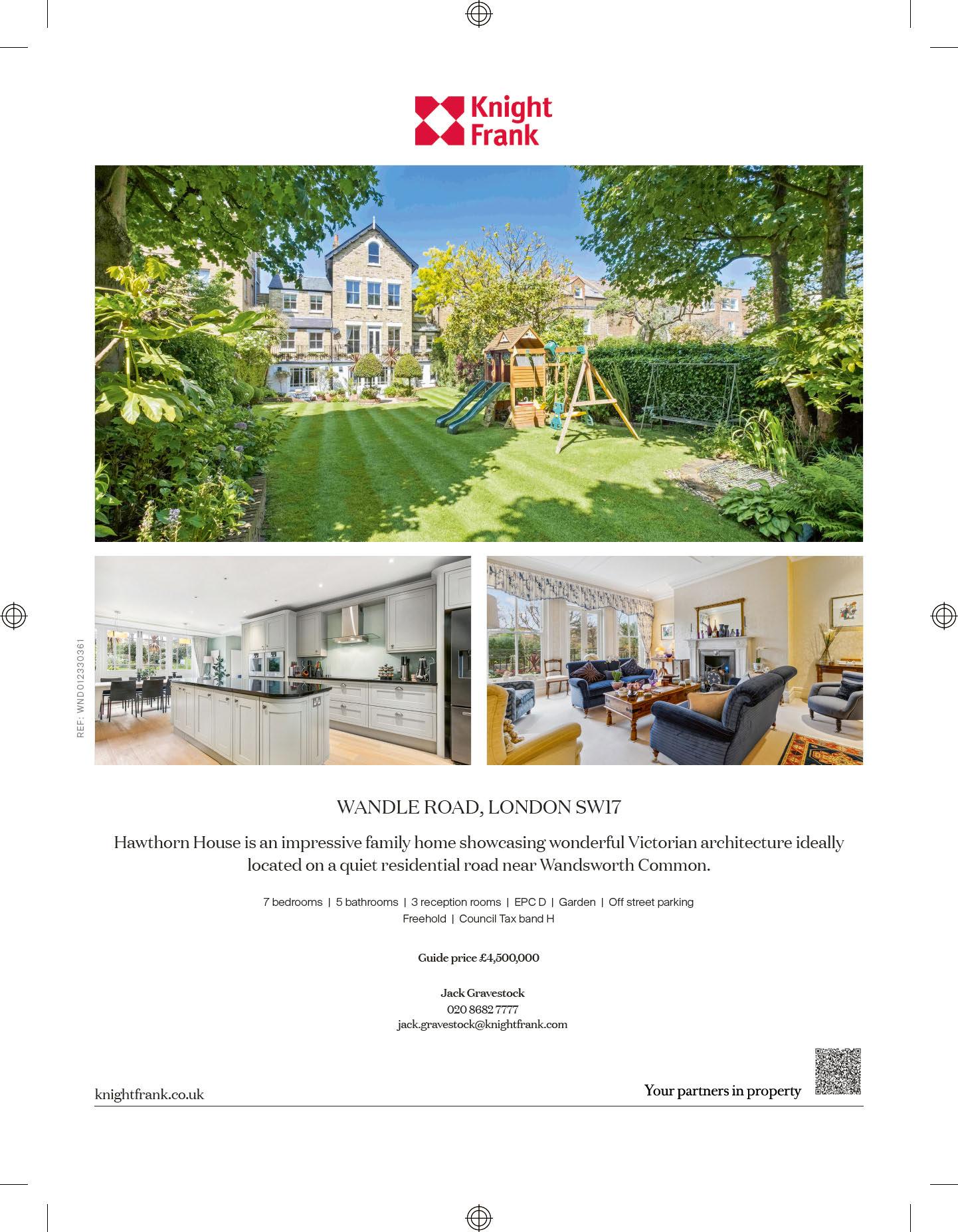
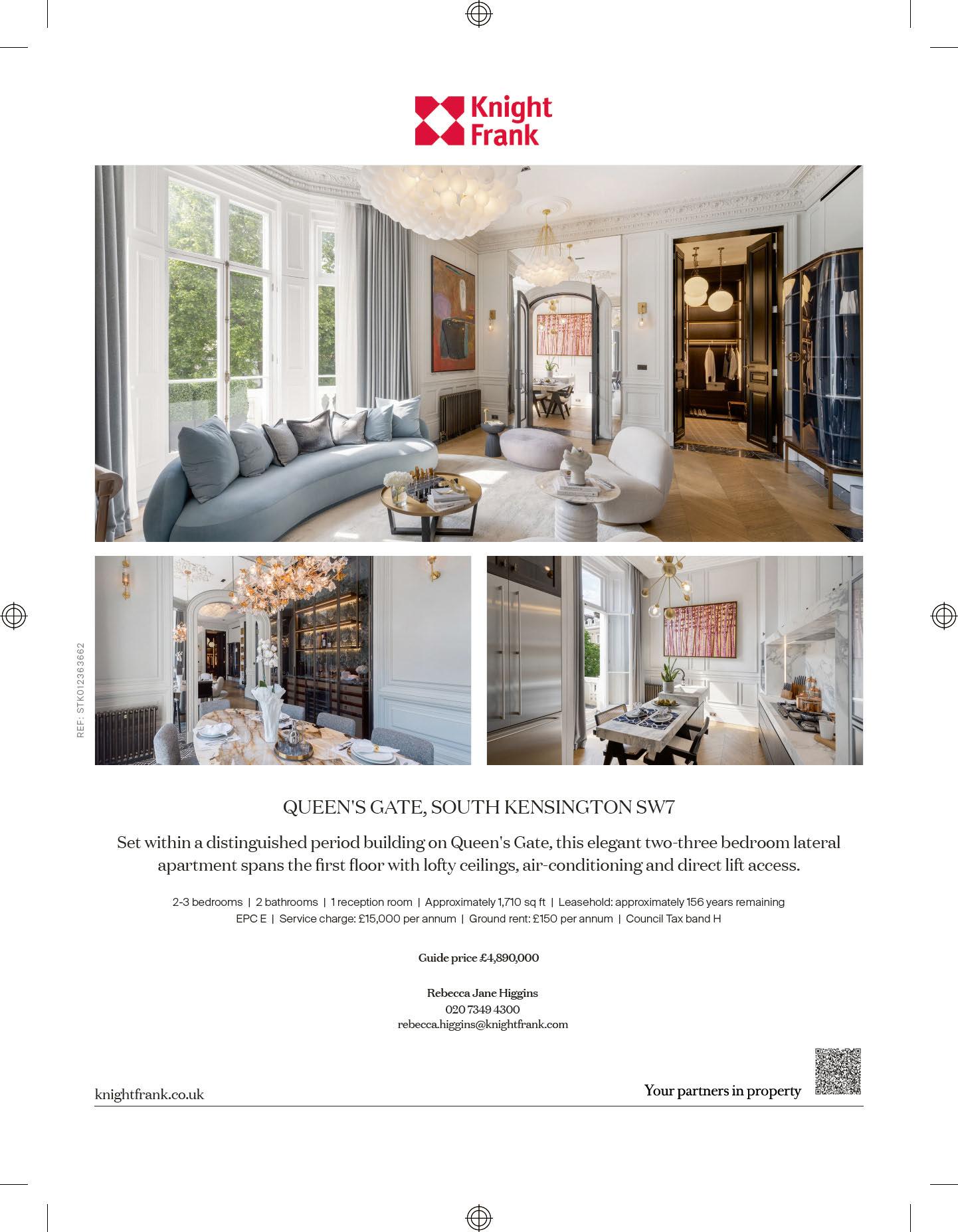

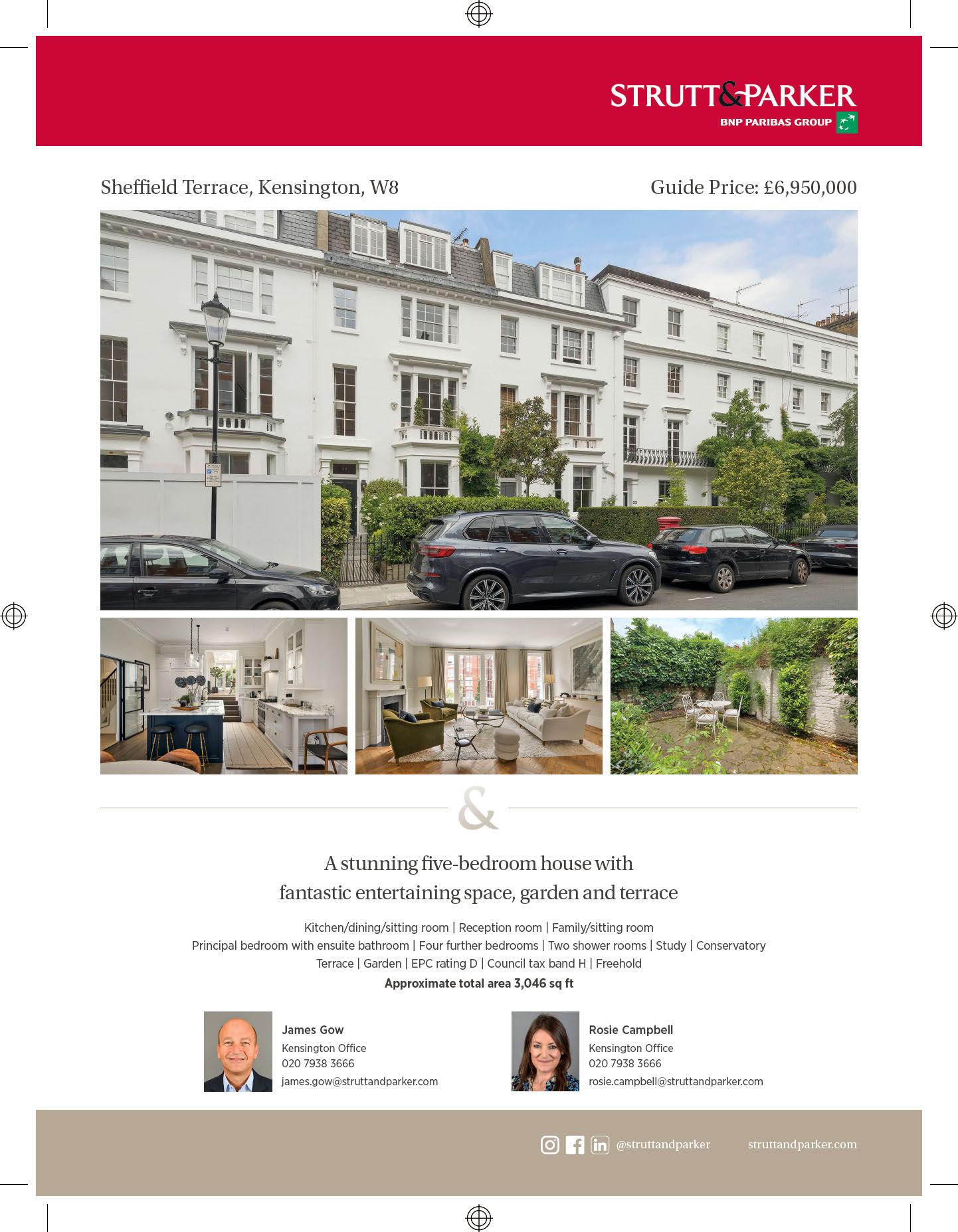
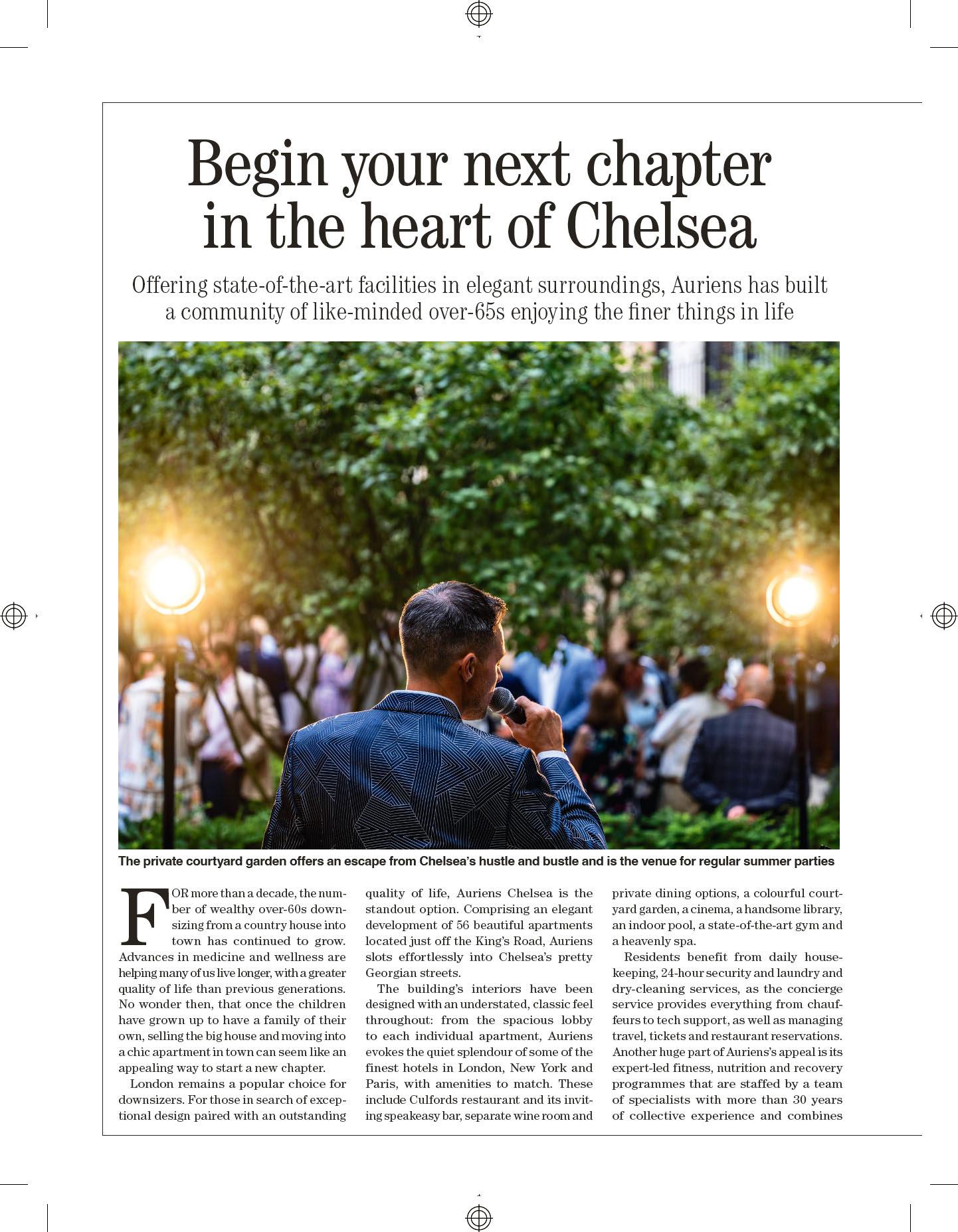

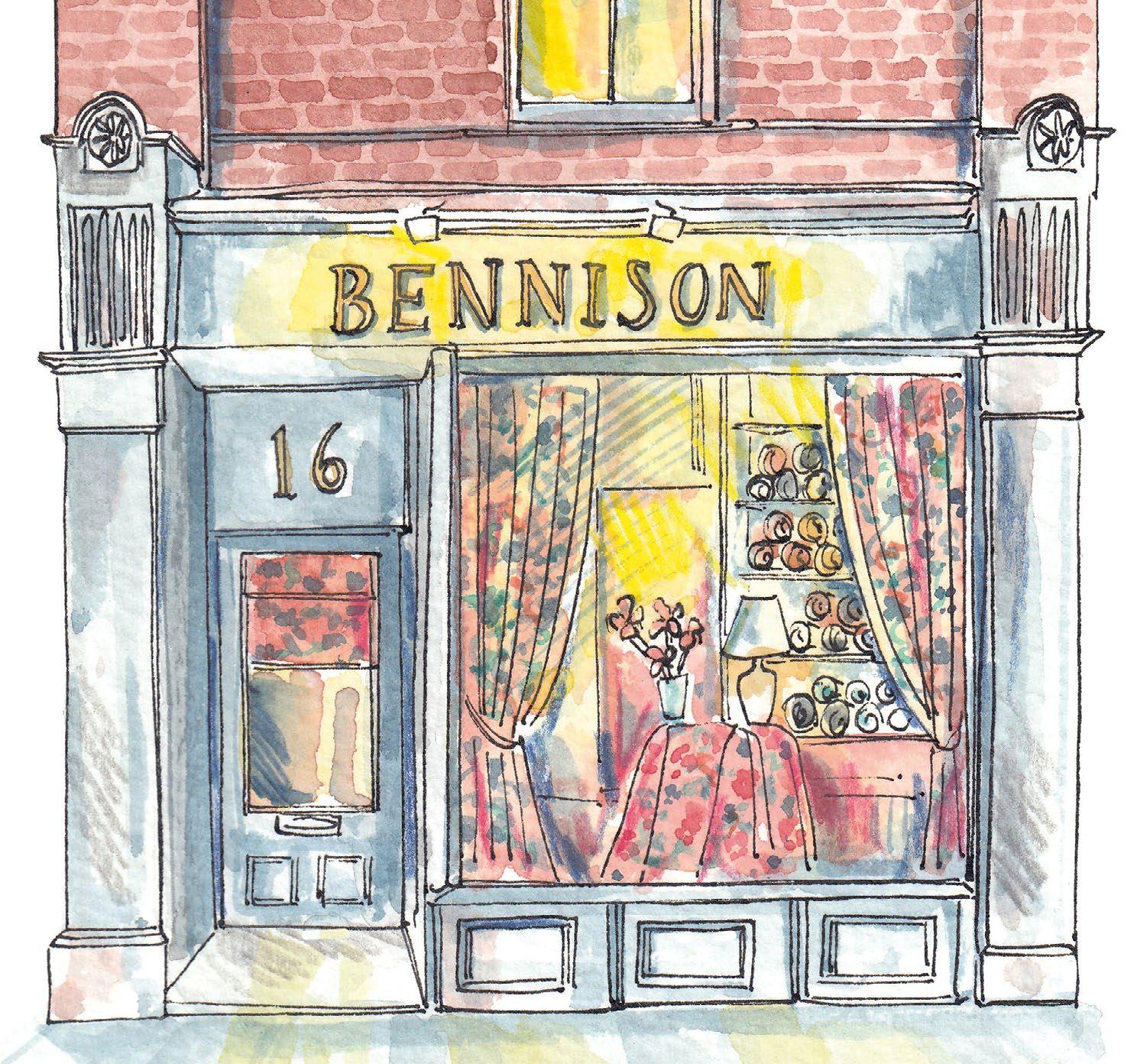
Open Monday to Friday, 10.30am–5.30pm (020–7730 8076; www.bennisonfabrics.com)
Go now
Immerse yourself in the kaleidoscopic ‘Gianni Versace Retrospective’ at Arches London Bridge, SE1, where more than 450 garments and accessories, including items worn by Sir Elton John and Princess Diana, as well as personal photographs and sketches by the visionary designer, will be on display from July 16. Tickets from £25.75 (www.archeslondonbridge.co.uk)
See rock’s greatest rebels before they conquered the world in ‘Rolling Stones: Unseen’ (right), an exhibition of more than 100 unseen photographs shot by Gus Coral in 1963. Dockside Vaults, E1, until September 10. Tickets from £15 (www. rollingstonesunseen.com)
The ‘Centre Court-yard’ at Ham Yard Hotel returns from June 30, serving Wimbledon on the big screen, seasonal cocktails and a picnic hamper afternoon tea. Tables from £25 (www.firmdale hotels.com)
Award-winning New York bar Dante, founded in 1915, takes over Claridge’s Restaurant, W1, until July 31. Expect
THE Bennison storeroom, which stretches across two mews houses south of Sloane Square, still has the remnants of stables protruding from the back wall. Behind the grilles, rolls of hand-printed new cloth are organised from floor to ceiling; original antique specimens, many from the 18th and 19th centuries, are folded into cubbies nearby. A more refined showroom is around the corner at No 16, Holbein Place. ‘People come in and we chat,’ says Louise Richards, head of sales for the UK and Europe. ‘We often start with something quite basic, such as their favourite colour, and we go from there.’ Bennison is named for the renowned antiques dealer Geoffrey Bennison, who began reprinting fabrics he discovered in the course of his work—preserved from lampshades or the seats of dining chairs—before he died in 1984. The fabrics grew into a company run by one of his former colleagues, Gillian Newberry, and it’s been a largely word-of-mouth success ever since, favoured by customers with an appreciation for the past. ‘Your house shouldn’t look like a catalogue,’ says Ms Richards. ‘You want it to look as if it’s always been there and always been right.’ Jo Rodgers
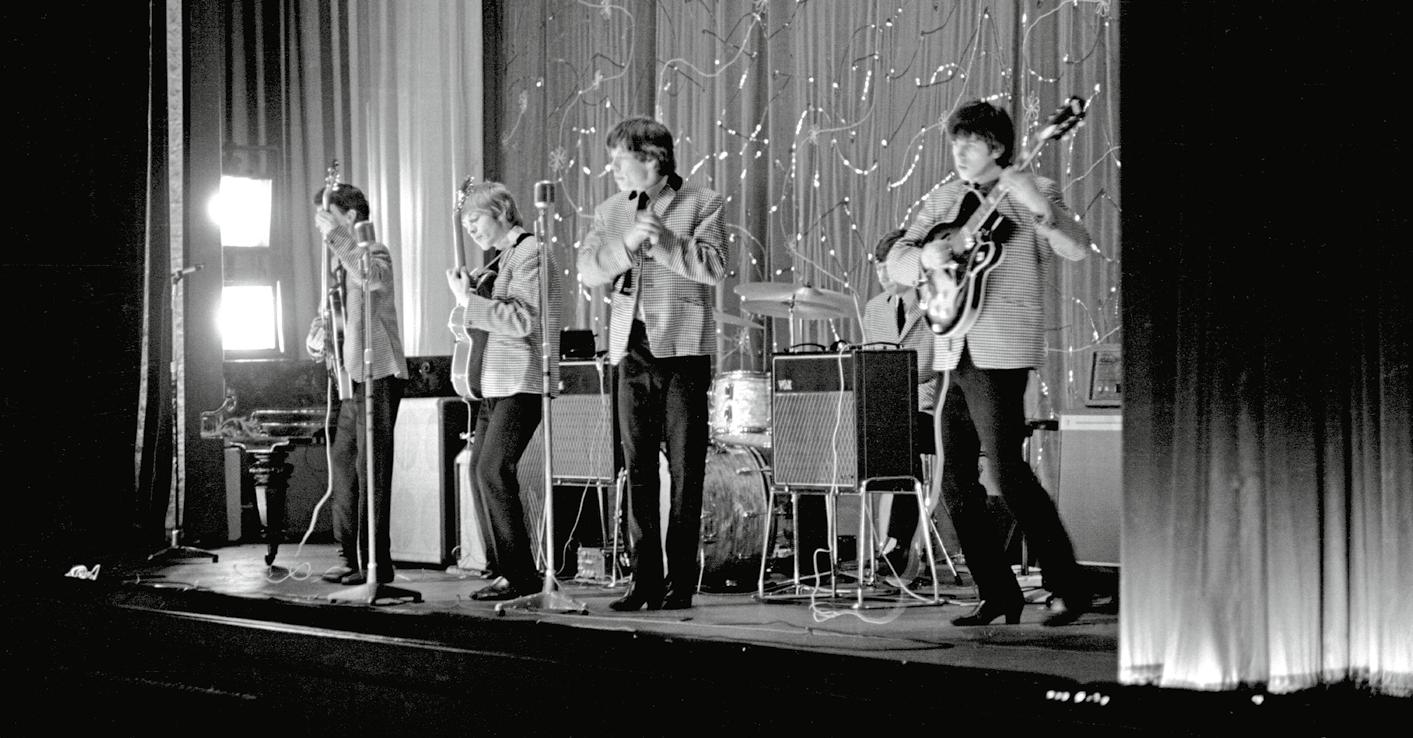
signature drinks, such as the Dante Garibaldi with ‘fluffy orange juice’, alongside shrimp, steaks and stacks of pancakes (www.claridges.co.uk)
Book ahead
Tate Modern marks the centenary of Picasso’s The Three Dancers with ‘Theatre Picasso’, an exhibition of more than 45 works by the artist, including paintings, sculptures and textiles, some never before seen in the UK. From September 17; tickets £14 (www.tate.org.uk)

Alicia Vikander (The Danish Girl ) and Andrew Lincoln (Love Actually) star in The Lady from the Sea, a thrilling play dissecting women’s autonomy, desire and rebirth. Bridge Theatre, SE1, September 10—November 8. Tickets from £25 (www. bridgetheatre.co.uk)
Brendan Gleeson makes his West End stage debut in a spellbinding production of The Weir, a tale of stormy nights and haunting stories. Harold Pinter Theatre, SW1, September 12–December 6. Tickets from £25 (www.haroldpintertheatre.co.uk) AEW
Martin Brudnizki
Best cocktail?
A negroni sbagliato at the Broadwick Soho, W1. Stunning Dream bus route?
I’d prefer a boat, starting on the river opposite Hampton Court, along past Ham House, Marble Hill and Kew Palace, stopping for lunch at The River Café, W6
Favourite building?
You can’t beat Sir Christopher Wren’s churches for English Baroque. St Paul’s, EC4, obviously, and St Margaret Lothbury, EC2, which has beautiful

interiors with carvings by Grinling Gibbons
Where do you go in the rain?
I never tire of the Sir John Soane’s Museum,
WC2. He was a sort of proto-Modernist and I frequently seek inspiration for our projects North or south of the river?
I have to say north because I live there!
What’s the best place that no one goes to?
Wigmore Hall, W1. I always get tickets on the day and have the most wonderful and spontaneous evenings there
Martin Brudnizki is the founder of interiorarchitect and productdesign company Martin Brudnizki Design Studio (www.mbds.com)
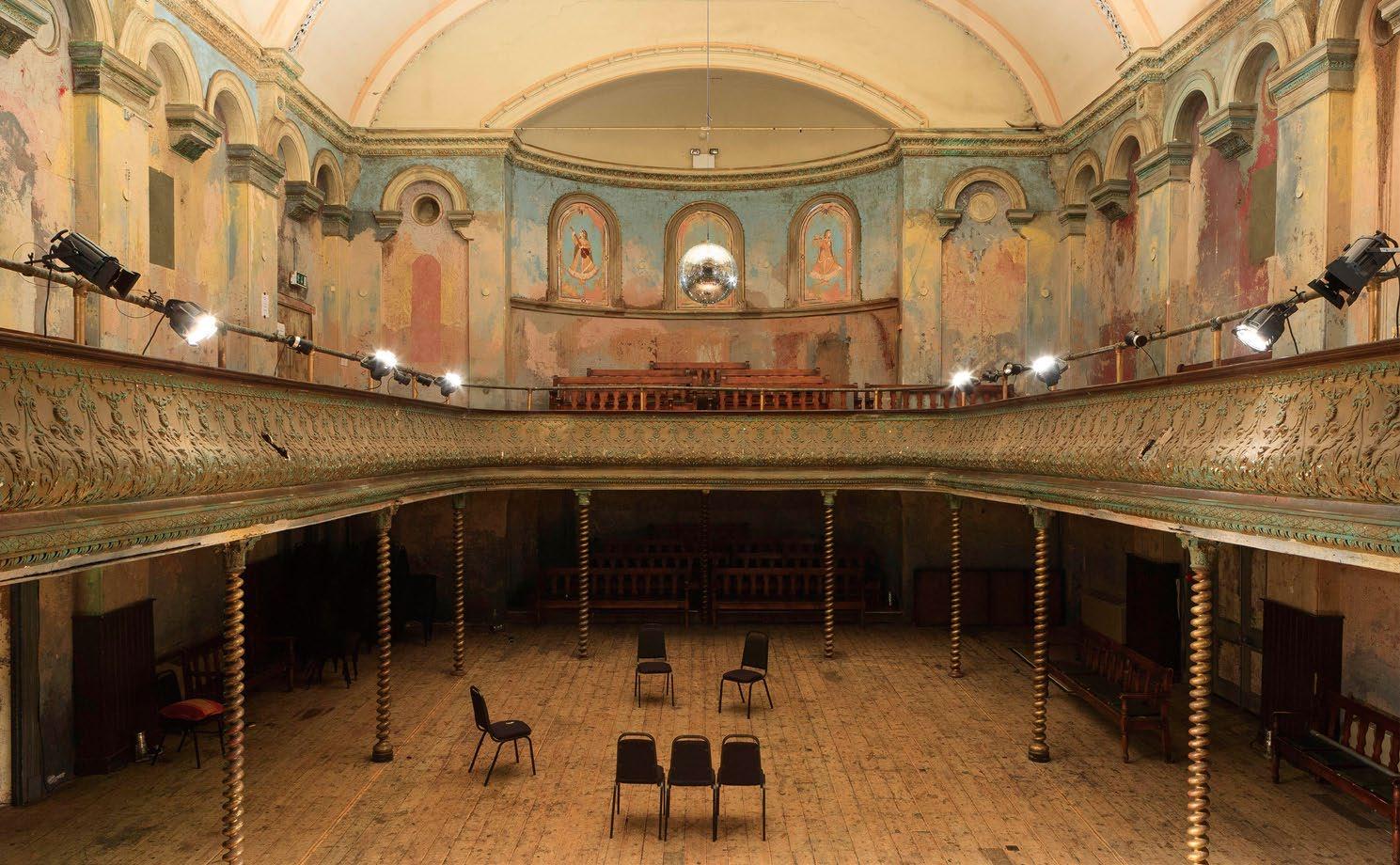
Here’s looking at
• The world’s oldest surviving grand Victorian music hall (above) began as a small alehouse and row of homes on Grace’s Alley, E1. They were bought by John Wilton in the early 1850s, combined with a concert room, and replaced by his ‘Magnificent New Music Hall’ in 1859, designed to bring blue-ribbon entertainment to East End working people
• The hall was furnished with mirrors and decorative paintwork, comfortable seating and the finest heating systems of the day. A ‘sunburner’ chandelier of 300 gas jets and 27,000 cut crystals illuminated the space and the resultant charring is still visible in the rafters
• In 1877, a fire destroyed the hall, leaving only
four walls and the 10 barley-sugar cast-iron pillars that supported the balcony (the same are in use today). It was rebuilt, but closed as a music hall in 1881, as it did not conform to new fire regulations introduced that year
• In the following years, it operated as a Methodist Mission hall, which was used as a soup kitchen during the 1889 London dockers’ strike and brought tea to air-raid shelters in the Blitz
• A demolition notice was issued in 1964, but a campaign led by John Earl and Sir John Betjeman ignited public and professional interest. Music videos such as Kate Bush’s Wow (1979) and part of Frankie Goes to Hollywood’s Relax (1984) were shot there
• The building was saved, refurbished, and won RIBA’s London Building of the Year award in 2016. It now operates as a theatre, music hall and event space AEW
The patch between South Kensington station and the museums has always been, with the honourable exceptions of Polish legends Daquise and Ognisko, a bit of a restaurant desert. The news that the former Cromwell Place events space, a Grade II-listed Georgian townhouse, was becoming a restaurant was, therefore, rapturously received— not least by yours truly, who has just splashed out on a V&A membership.
No 4 was once the home of Anglo-Irish portraitist Sir John Lavery and if there’s one thing painters insist on at home, it’s plenty of natural light. The dining room of The Lavery is flooded with the stuff, the whitewashed walls and burnished parquet conspiring on a sunny evening to make you feel as if you’re in some heaven-set Hollywood dream sequence (one where sourdough and small-batch olive oil materialise as if by magic).
The Lavery’s former owner isn’t the only illustrious thing about this place. Between them, creative director Martin Cohen, front-of-house Alcides Gauto and chef Yohei Furuhashi have spent more than a decade at L’Escargot, Rochelle Canteen, Toklas and The River Café (the zinc-topped bar here, with its fire-enginered seating, feels pleasingly familiar). The menu features many of the fixtures on the London restaurant bingo card—blood orange, scallops, hand-rolled pasta, prestige pulses—but nothing feels paintby-numbers. Carne cruda is blushing veal tartare with raw artichoke and Parmesan, both shaved so thin they’re almost translucent. Nettle tagliolini arrives bathed in lactic cultured butter, enlivened further with a pinch of nutmeg and a judicious grating of ricotta salata. Painterly as the cooking may be, it’s far from insubstantial: a mighty Tamworth pork chop, sitting atop confit Amalfi lemon, sage and a Piedmontese pepper braise, defeats two of us.
Regular readers will know my views on mousse-based desserts with a few token stegosaurus spikes of meringue or biscuit (a kitchen cop-out to save on the cost of a pastry chef). However, the chocolate mousse here, topped with boozy Agen prunes, is a winner. As we fight over the last spoonful, well oiled with dessert wine, we watch the sun set over South Kensington and conclude that The Lavery is a masterpiece. Emma Hughes
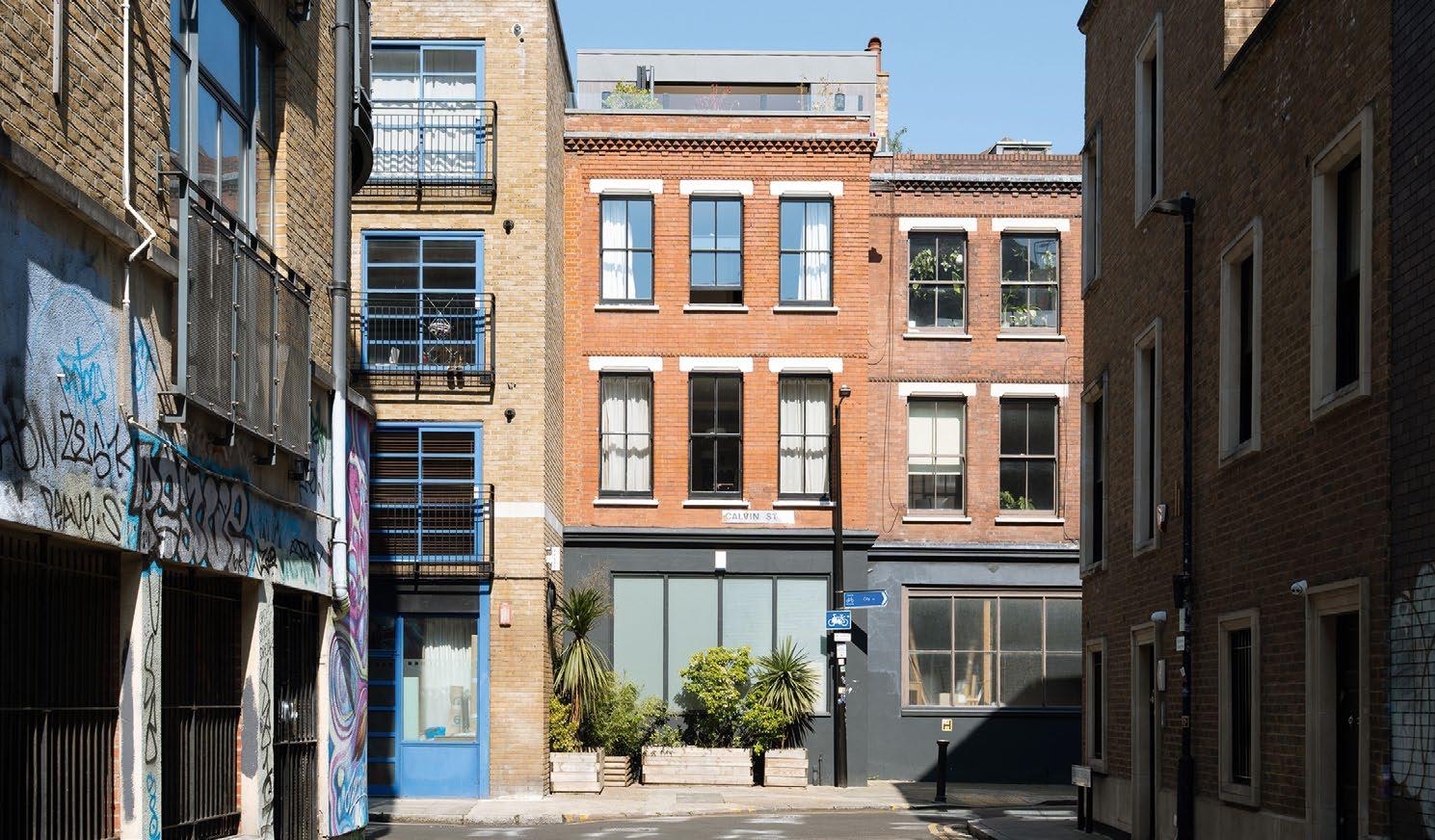
THE streets of Spitalfields are among London’s most beautiful. Cobblestone roads bedecked by Huguenot houses with red brick and sash windows are frequented by artists almost as famous as the city itself: Dame Tracey Emin used to live on Fournier Street, together with Gilbert & George, who still reside there. Together, they offer a vision of the capital at its most dreamlike.
One of my favourite pieces of celebrity trivia concerns Dame Tracey’s preference for tanning naked on the roof terrace of her old house, a fact she revealed at the Hay Literary Festival two years ago as, in the same breath, she called Sir Keir Starmer a politician without edge. The Spitalfields of yore had more in common with the artist’s sharp tongue than with the luxury of roof-terrace nudity. Indeed, the neighbourhood was once a slum, but, as have many other postcodes, has undergone extraordinary gentrification in the past 20 years. Its rugged charm is now a façade for multi-million-pound deals and although the nearby shopfronts—Aesop, Percival, American Vintage—are reminiscent of those in Notting Hill, former haunts are nodded to in the faded signage that adorns various street corners.
Spitalfields counts among its thoroughfares one of London’s most emblematic: the always fun, always chaotic Brick Lane. Just off there, however, are dozens of quiet, narrower streets that retain the intimate proportions of the neighbourhood’s original development, together with converted Victorian warehouses.
A row of the latter is still standing on Calvin Street, located within the Fournier Street conservation area. They were originally conceived for the nearby Truman Brewery and the
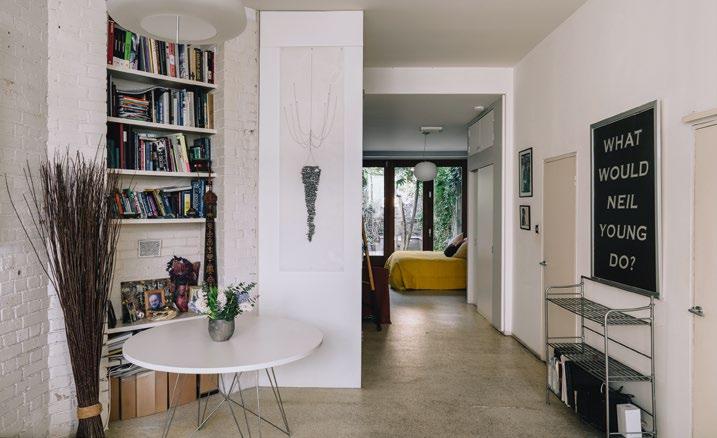
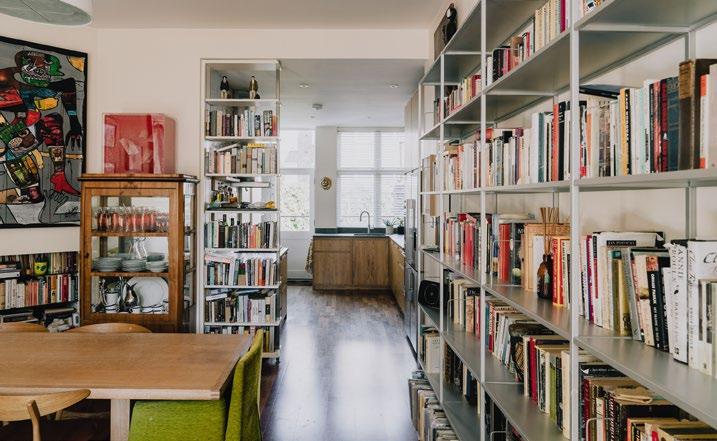
house at the end of the row—three bedrooms, three bathrooms, two reception rooms— is up for sale. The property retains some original features, including oak staircases, two alcoves where once there were fireplaces and an external pulley that was used to haul up supplies through the cargo doors. To own it would be to own a piece of history.
As this isn’t a part of London known for its green spaces, many in the area have compensated for this fact by planting trees and potting flowers around their homes. Gardeners looking to put down their bags in London might have previously elected for more openly residential areas, but this particular house offers a walled garden at the rear, planted with jasmine and copper beech. More still can be planted on the roof terraces, of which there are two, a treat for sun-chasers, and cityscape enthusiasts will fall in love with the sweeping views across town. £2,350,000, The Modern House (020–3795 5920; www.themodernhouse.com) WH

The past few weeks have been almost suffocatingly warm. Offices have been empty, parks have been full and friends with Soho House membership have never been more in demand. ‘Oh, darling, it’s been so long! Shall we pop over to the one in Shoreditch and catch up at the pool?’
Yet anyone who’s ever had to fight for a red-and-white sun lounger will caution you against even attempting to do so. We Londoners are blessed with a multitude of swimming spots: lidos, the Serpentine, the ponds on Hampstead Heath. LONDON LIFE readers will know its previous Editor was fond of wild swimming—and this one is no different. Its benefits are well known and, in those months when picnics, picky bits and rosé reign supreme (and no one can remember the last time they had a home-cooked meal), we ought to boost our health in whatever way possible.
The notion of pond water is enough to repel some, but, as with stripping to our underwear the moment the temperature hits 30˚C and lying on the grass as if we’re part of a citywide campaign for M&S, it’s one of those traditions enriched by crowds rather than ruined by them. Grab your sunnies and sunscreen—I’ll see you in NW3. Will Hosie is the Editor of LONDON LIFE and has been known to fall asleep in the sun for far too long
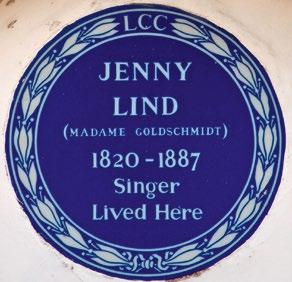
WHEN, as a child in Stockholm, Jenny Lind sat at a window singing to her cat, people in the street stopped to listen in awe and wonder. A European operatic celebrity from the 1840s, she was known as the Swedish Nightingale. She and her husband, Otto Goldschmidt, settled in a newly-built villa in Kensington in 1874. The area’s rural character was changing. Otto was musical director of the Bach Choir and Madame Goldschmidt, the first professor of singing at the Royal College of Music, gave lessons at what was once No 1 Moreton Gardens. Lind’s plaque is nearby in Boltons Place. Jack Watkins
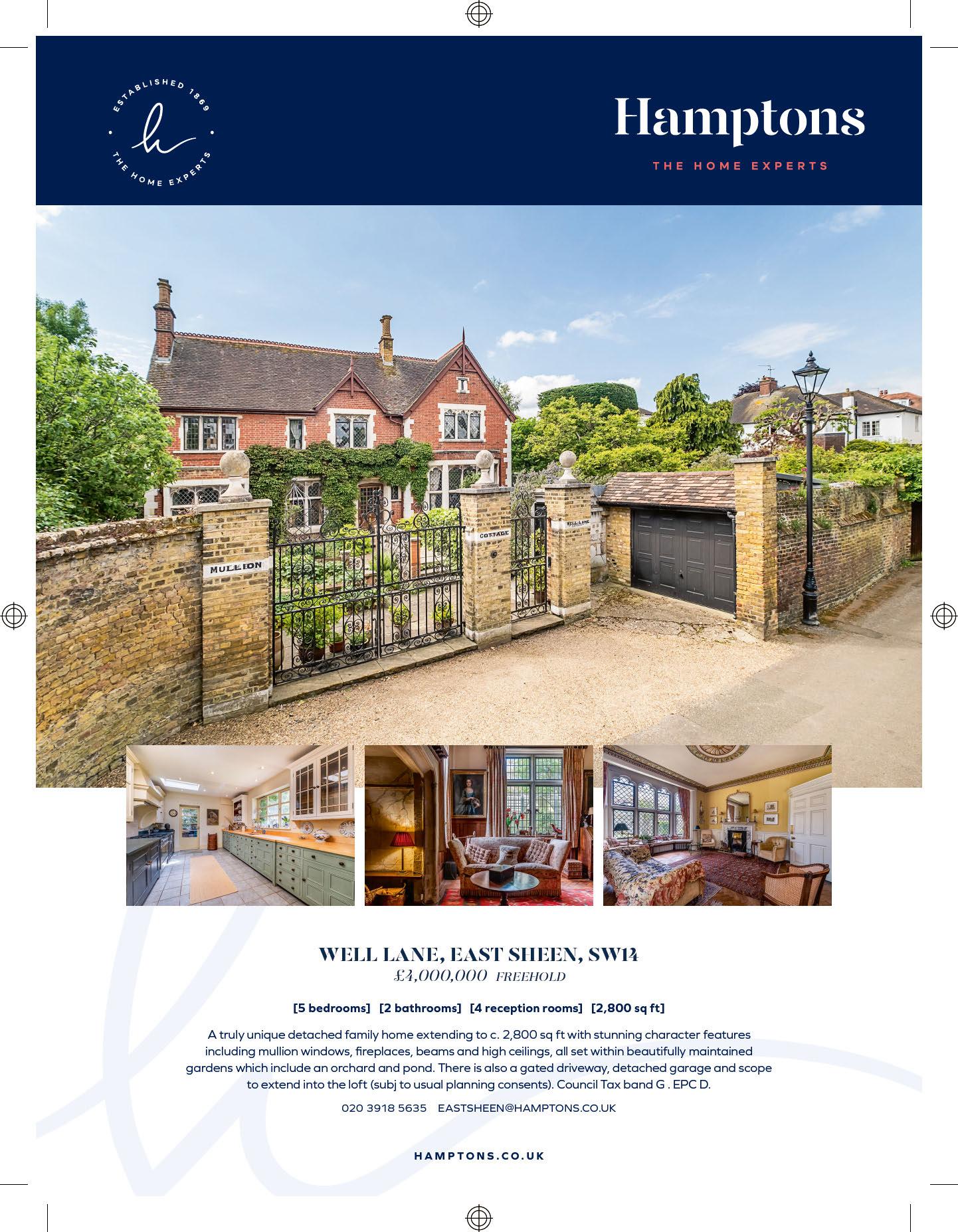
The style set is returning to the very neighbourhoods it once made a habit of spurning, finds Will Hosie
LAST month saw Yinka Ilori unveil his latest public artwork: a collection of discarded relics excavated from the banks of the Thames. You won’t find 100 Found Objects in London’s Soho or St James’s, the W1 neighbourhoods that have long had a chokehold on contemporary art, nor in one of the sleek, cuttingedge galleries near Old Street, EC2. No: Ilori’s work is at the heart of a new riverside development in a London postcode that’s long been synonymous with the red-trouser brigade. It is in Fulham, SW6, that the man behind the Colour Palace at Dulwich Picture Gallery, SE21—who’s staged installations at Piccadilly Circus, designed bespoke exteriors for McLaren supercars and whose work has been exhibited at the Guggenheim in Bilbao, Spain—is beginning his next chapter.
The site of 100 Found Objects is Fulham Pier, a commercial development adjoining Fulham Football Club and a stone’s throw from The River Café, W6, for a long time the only restaurant in the area deemed smart enough to warrant a visit by the style set.
registered east of Mayfair. Perhaps thanks to TopJaw—a foodie duo that has racked up 814,000 Instagram followers for interviews with London chefs, who recommend their favourite spots in the capital—The Chancellors is now so overrun you have to pre-order your pizza dough.
Fulham feels increasingly like Islington, N1, did a decade ago. Residents look trendier than they once did. Men wear sport shorts instead of chinos and flaunt tasteful little tattoos. The Melbourne accent is pervasive.
Yet, unlike Islington, Fulham is sliding down the gentrification scale rather than climbing up it. This is also true of neighbouring districts such as Kensington and Chelsea, which are dialling down the glamour as they cater towards a clientele that increasingly prefers neighbourhood restaurants to five-star hotels.
The next-door launch last June of its younger sister, The River Cafe Café, was a harbinger of things to come. A year on, fancy street vendors are down the road selling pizza and tacos, as restaurateur Adam Byatt, the man behind Clapham’s only Michelin-starred establishment (Upstairs at Trinity, SW4), opens a riverside restaurant to rival Ruthie Rogers’s institution.
Its name, Brasserie Constance, takes after Constance Spry, one of the inventors of coronation chicken and a florist who designed her own vases: a gesture to Fulham’s heritage as the one-time heart of London’s pottery trade. With Mr Ilori’s newest installation standing proudly within the same complex, the area is beginning to rekindle its artistic flame. Lighthouse Social, a private members’ club, sits atop Fulham Pier with a private roof terrace and a five-minute walk away is The Chancellors, a pub best known as the site of Crisp Pizza, which many deem London’s best. It was once the sort of place that west Londoners kept under wraps: a word-of-mouth recommendation that rarely
In May, data revealed that property prices in the Royal Borough had slumped to 2013 levels. Whereas homes in east London are increasingly covetable, those in the west have fallen out of favour. This market downturn (‘plateau’ might be more accurate) has its perks: property in Kensington and Chelsea is now relatively affordable. Apartments at the western end of the King’s Road, SW10, are going for the same price as those in London Fields.
‘There was a real eastward trend 20 years ago when people who wanted something edgier moved to Mile End,’ explains Arthur Lintell, a partner at Knight Frank. ‘Those areas have become victims of their own success.’ It’s now cliché for young creatives to live there; yet the reverse logic—that moving back to west London makes you an original —has taken a while to take off. The tide, however, now seems to be turning. Queen’s Park, NW6, and North Kensington, W10, are proving popular with the new intelligentsia. The former is home to Zadie Smith, Daniel Craig and a flurry of media pundits; the latter is the site of myriad design shops along the achingly hip Golborne Road—where you’ll also find two of London’s buzziest restaurants, Straker’s and The Fat Badger. ‘Smart money buys at times like this,’ Mr Lintell adds.
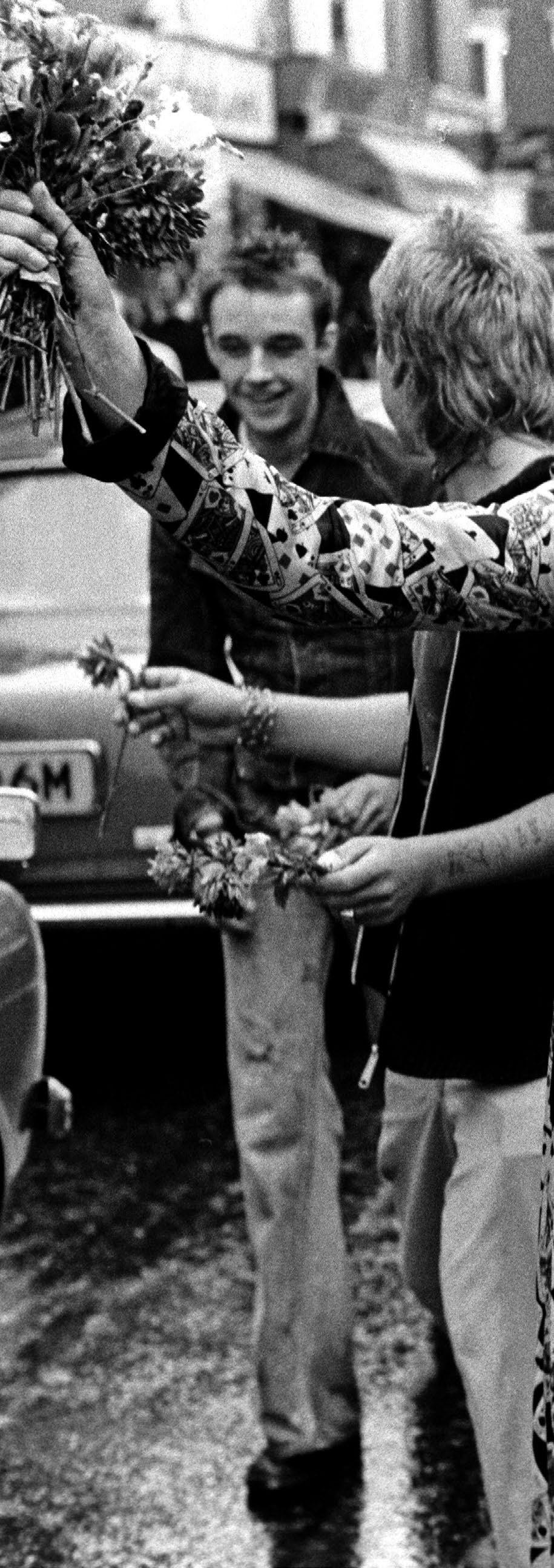
West London’s art galleries, once only familiar to those in the area, are also wooing new crowds. King’s Court Galleries (949–953 Fulham Road, SW6), better known for flogging vintage maps and botanical prints, is now selling works by James Mylne, a British contemporary artist who draws portraits of the late Queen and Boris Johnson in ballpoint pen. (The latter is depicted as a clown.)
Mr Byatt believes the area is becoming more attractive to young people. ‘SW6 has the highest work-from-home rate of any postcode,’ the chef says, ‘and the highest
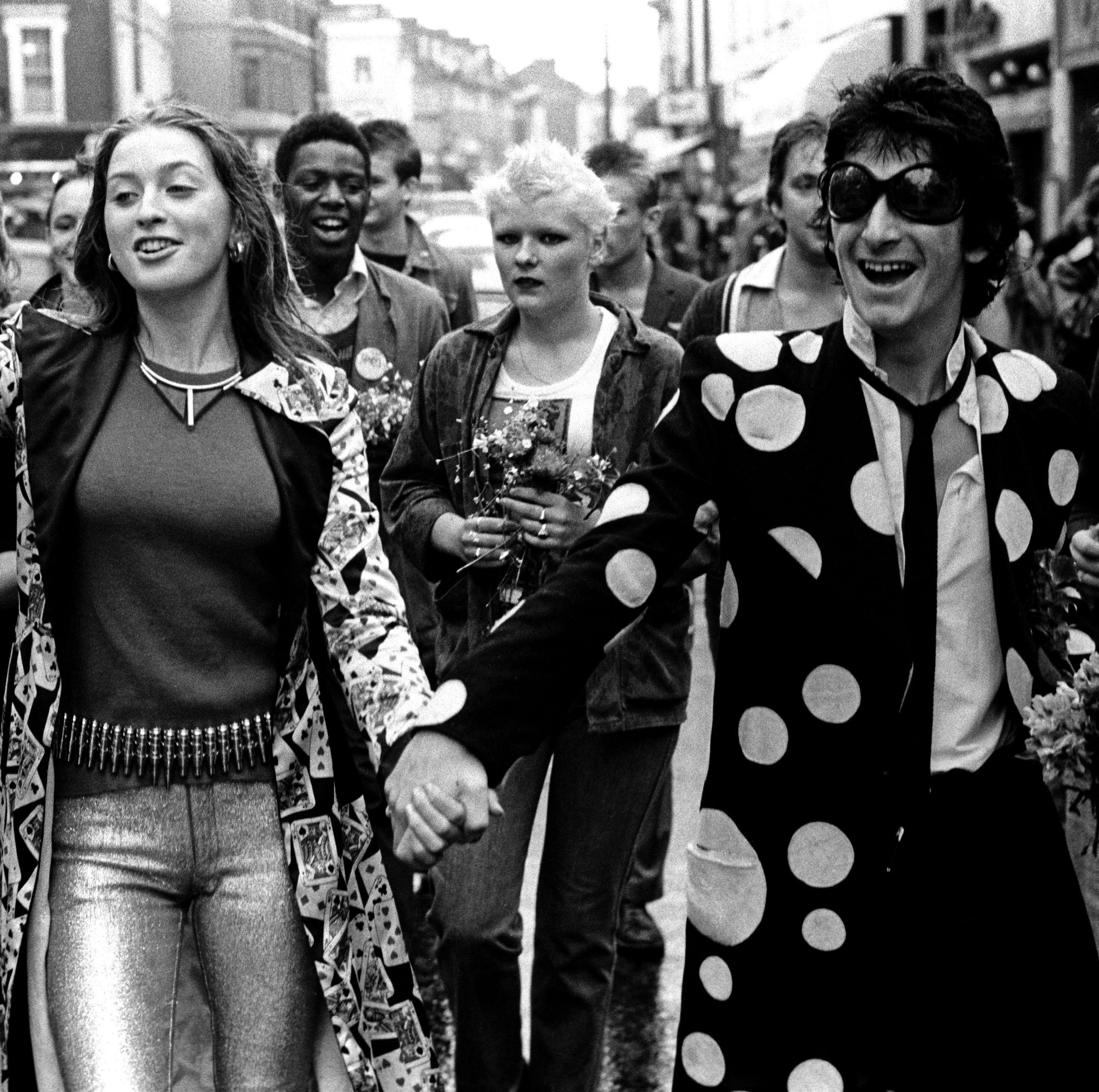
number of business owners, as well as a large volume of long-term residents and families.’
Much like Hackney 20 years ago, Fulham is now poised to benefit from the injection of younger tastes—and money.
Already, businesses that found success in other parts of town are returning to west London neighbourhoods previously deemed unaffordable. The King’s Road is once again home to independent shops and cafés and has become a gastro hub, with Alley Cats (pizza), Ixchel (Mexican) and Fantômas (modern European) all opening in the past
two years. This phenomenon has brought creatives from all over London to the very area they’d made a habit of spurning.
The image of the Sloane Ranger—horsey, well-heeled, uncool—has been used to denigrate purveyors of the Royal Borough since the 1980s. It is precisely this image to which the area’s new occupiers are taking the chainsaw. Last month, a new private members’ club opened in South Kensington, SW7, and although there used to be quite a few in the area—including the young Prince William and Catherine Middleton’s favourite haunt
When west London was cool: the days of punk royalty Tracey Boyle and Gary Holton handing out flowers on the 1970s King’s Road are returning—at least in part
before they were married, Boujis, which closed down in 2015 after a brawl—The Club at The Other House is different. All the usual accoutrements are there (a state-of-the-art gym, bar and restaurant), but it’s appended to a residential building that banks on the area’s reputation as a fine place to live. The programming toes the line between going
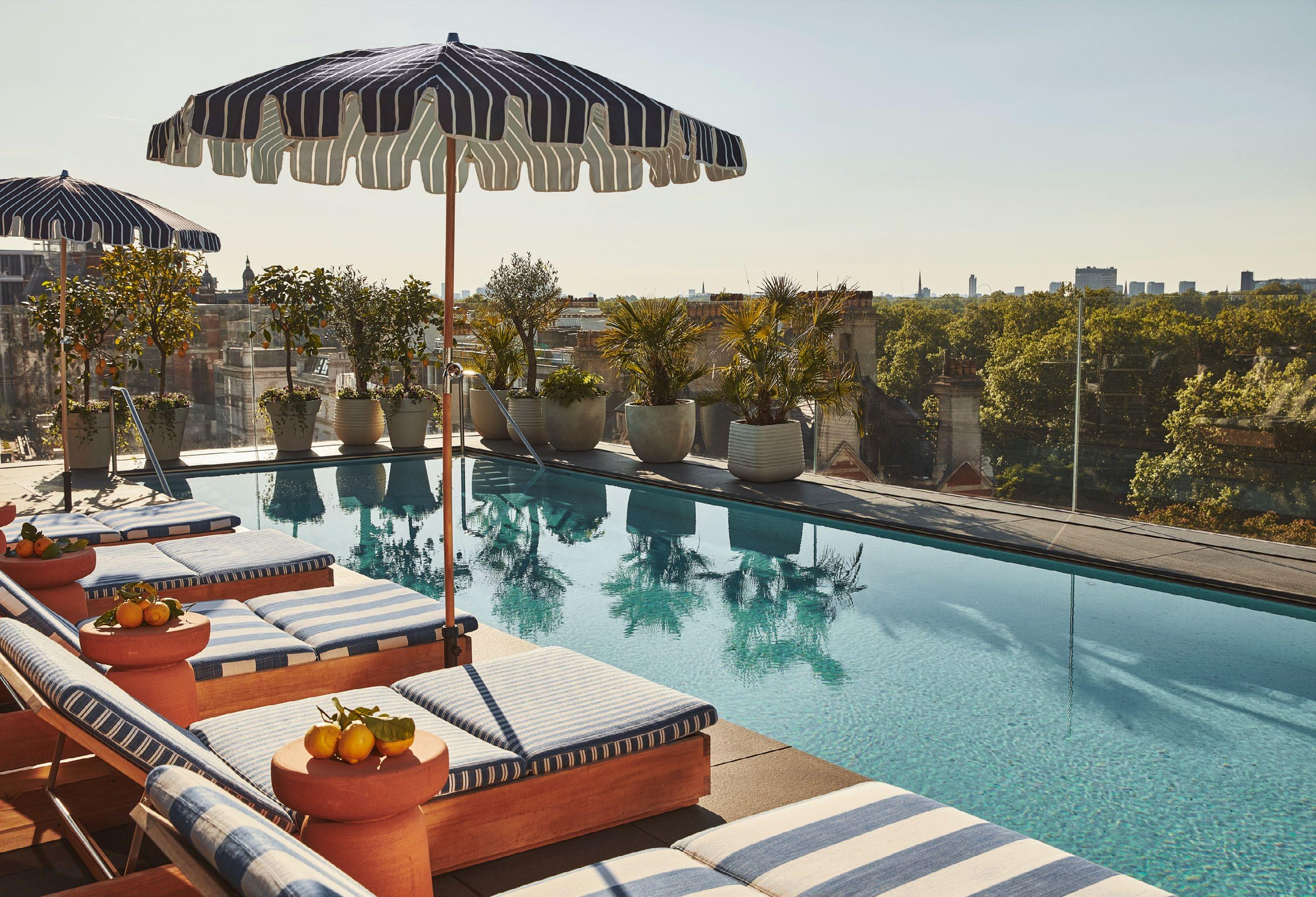
out and staying in: tarot readings, backgammon tournaments, jazz nights and wine tastings provided by Le Cordon Bleu.
‘South Kensington offers the perfect paradox,’ CEO Naomi Heaton tells me, ‘as an area steeped in culture and history, but ripe for new experiences and reinvention’—a fact supported by its historic popularity with expatriates. The Club is bringing a new crowd to SW7—‘more creatives, design lovers and tech entrepreneurs’—who are, by and large, younger than the Royal Borough’s habitual residents. A decade after the young and beautiful bid adieu to Boujis, their counterparts are moving back in. If you were still doubtful, Boujis itself reopened in April under the new name B London.
Meanwhile, an area such as Bayswater, W2, once a cultural no man’s land, is now seeing restaurateurs hustle for square footage. Wine bars and independent newsagents are opening on Leinster Terrace, to say nothing
A decade after the young and beautiful bid adieu to Boujis, their counterparts are moving back in
of The Park, Jeremy King’s new brasserie just up the road, or the new Whiteley development on Queensway. The former department store, which opened its current premises in 1911 looking to rival Harrods and Selfridges, has been restored to the splendour of its original design and is now a collection of luxury apartments and the site of a Six Senses hotel. Heading west, the famous Kensington Olympia—an exhibition centre that has been in redevelopment since 2021—
is to reopen late this year as a collection of cinemas, restaurants and entertainment venues, including the largest new theatre in London since the National opened in 1976.
Perhaps the most radical transformation, however, is happening south of Hyde Park. Knightsbridge has been at the heart of London’s post-pandemic hospitality boom, with a flurry of new shops and hotels in the area since 2022. Although it’s still Britain’s most expensive neighbourhood, the vibes have shifted considerably. Italian luxury brand Brunello Cucinelli, known for creating timeless pieces in neutral colours, moved into the old Roberto Cavalli premises on Sloane Street, SW1, earlier this year. Leopard print, it seems, is out in favour of a quieter luxury. In nearby hotels, too, the vibes are shifting. The Berkeley has opened up its rooftop terrace to the public for the summer: it now offers a more relaxed, convivial sort of exclusivity, much like that at the Pavilion,

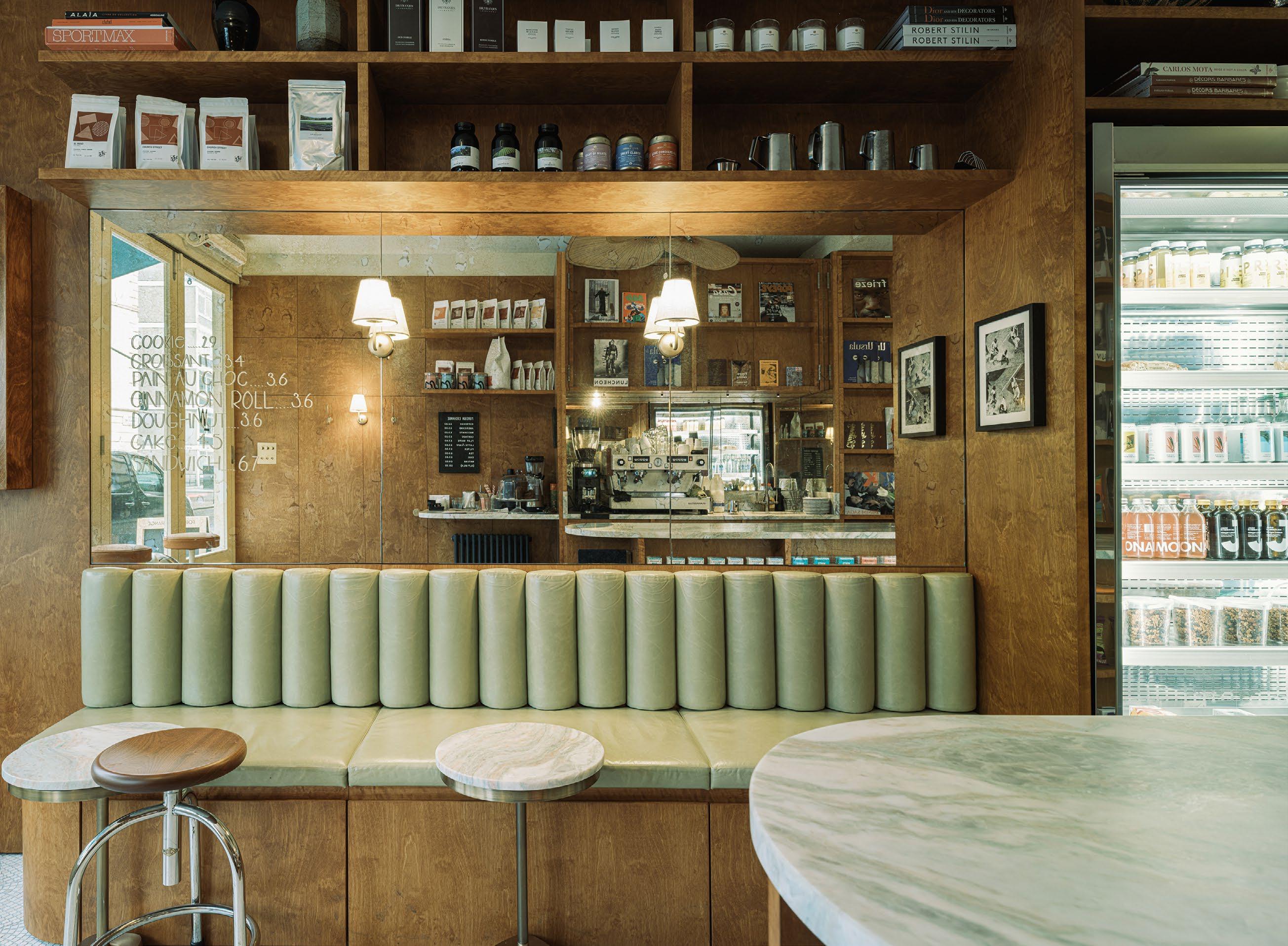
a private members’ club backing onto Hyde Park, which opened in 2021 and is frequented by young, creative types not normally associated with SW1. The multidisciplinary artist Lily Lewis hosted a poetry reading there last year and Tom Willis, founder of Soho Reading Series, took his literary salon to Ognisko, a Polish restaurant on Exhibition Road, SW7, in April.
There’s still fuel in the flash tank, however: Jaguar is to open a showroom on Sloane Street, covering no fewer than six retail locations. Roof gardens are back in style, too: SW1’s Pantechnicon—a former Artsand-Crafts warehouse now home to both a Japanese and a Provençal restaurant —is welcoming increasingly fashionable crowds to its panoramic rooftop terrace. Over on Kensington High Street, W8, the

once-legendary roof gardens at No 99 have been reborn under new ownership, with pop star Kylie Minogue recently celebrating the anniversary of her own-label rosé there. Further down the street, the unthinkable has happened: a nightclub has opened.
Clever investors will have already capitalised on this easterly wind, blowing from Dalston and bringing small plates and latenight partying westward. City mice are all too familiar with the saying ‘what goes around, comes around’ and historians, too, will know it was only a matter of time before this sleepy part of town got its clout back. After all, before it went sloaney, the King’s Road was punk.
Shaking it up: Daniel Craig is among the intelligentsia invading Queen’s Park, NW6
